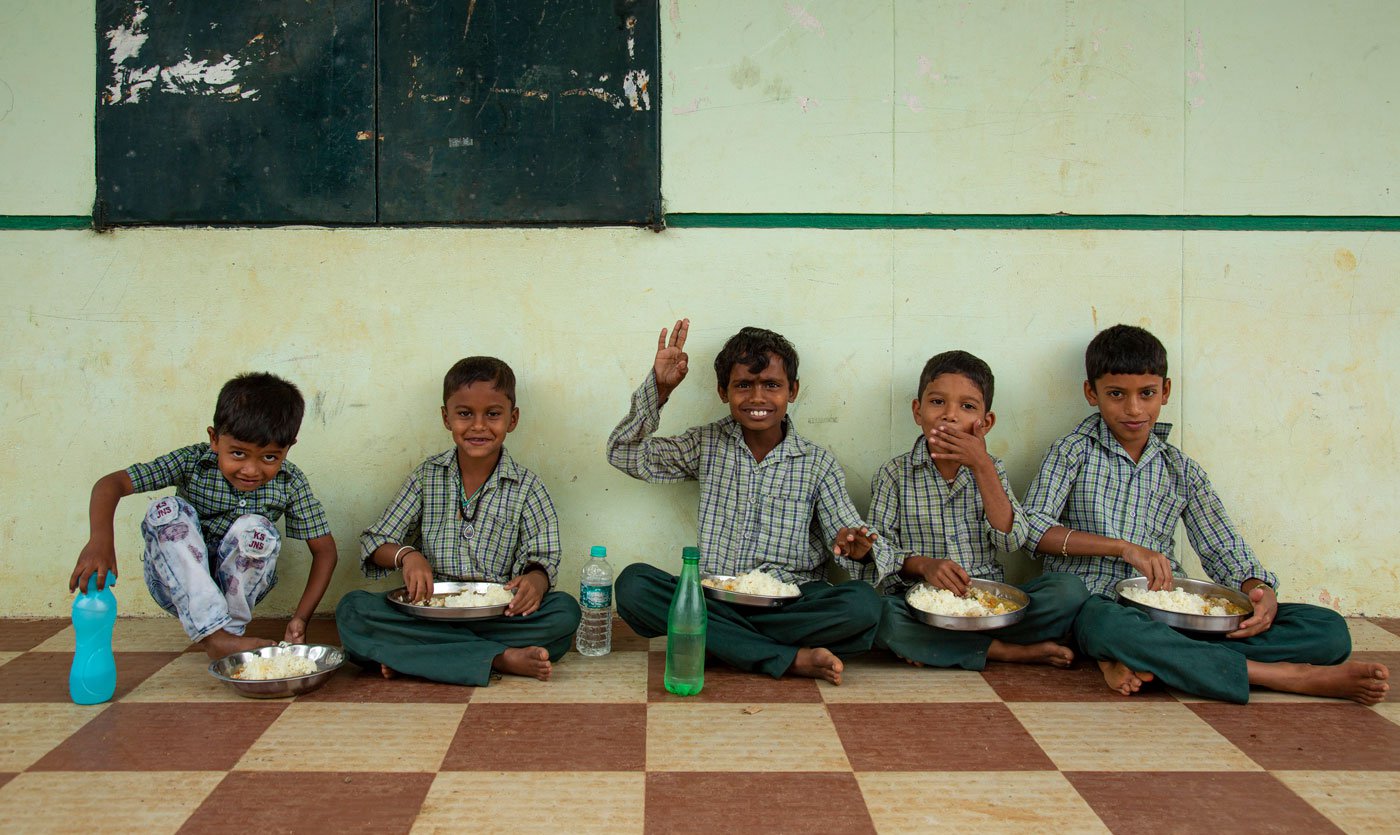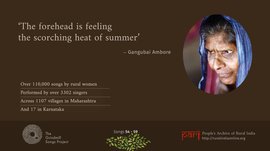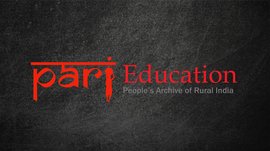“I wish the school gave second servings.”
Seven-year-old Basavaraju attends the Mandal Parishad Primary School in Serilingampally mandal in Telangana. This school in Ranga Reddy district is one of the 1.12 million (11.2 lakh) schools across the country where children get a hot cooked lunch. For those like 10-year-old Ambica, Basavaraju’s schoolmate who drinks just a glass of ganji (cooked rice water) before heading to school, it is the first meal of the day.
India’s mid-day meal scheme feeds about 118 million students of classes 1 to 8 studying at government and government-aided schools, and state-run learning centres supported by Sarva Shiksha Abhiyan – at no charge, on working days. No one can argue that a full stomach makes it easier to do math sums and wrestle with spellings, but the lunch is primarily expected to bring children to school. (At least 150 million children and youth are out of the formal education system in India, the union education minister, Dharmendra Pradhan, has said.)
Ten-year-old Daksh Bhatt had only eaten a few biscuits before coming to his school when we visited his school, Rajkiya Prathmik Vidyalaya in Jodhgadh village, in Rajasthan’s Bhilwara district. Thousands of kilometres away, in Nalbari district, Assam, Alisha Begum tells us that she ate a roti and drank black tea before setting out for her school, No. 858 Niz Khagata LP School. Her father is a street vendor and mother is a homemaker.
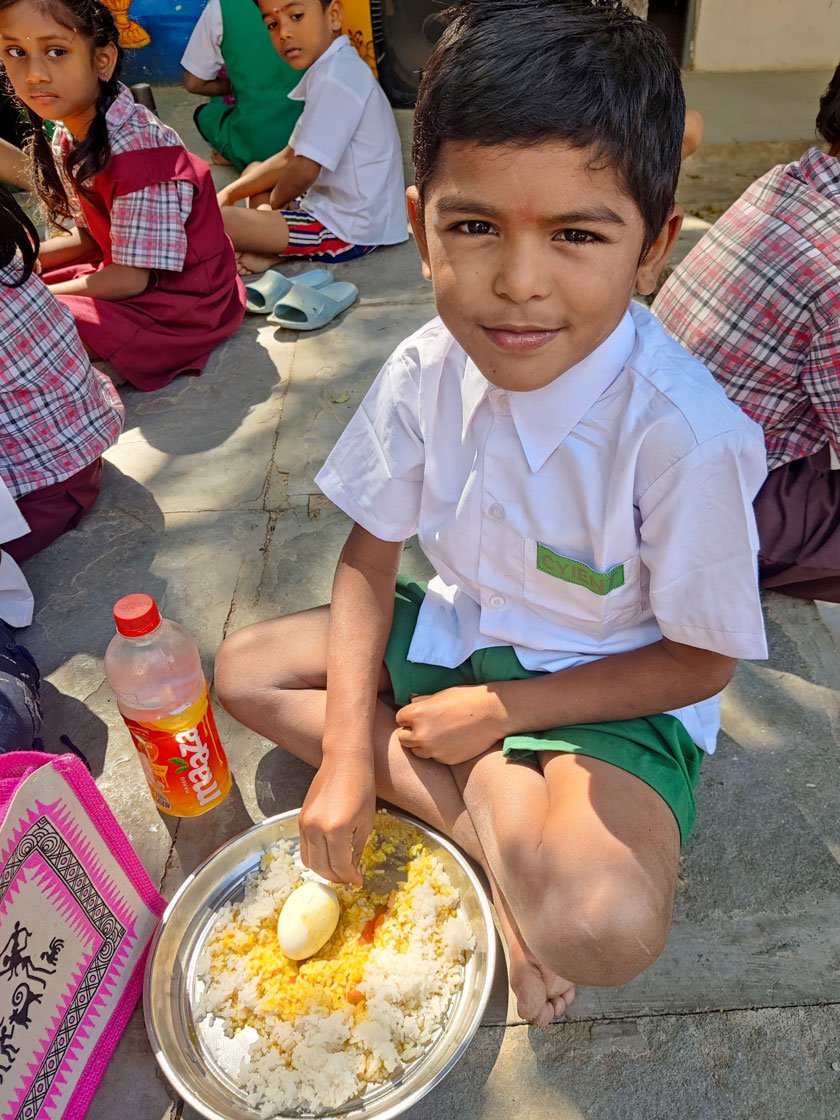
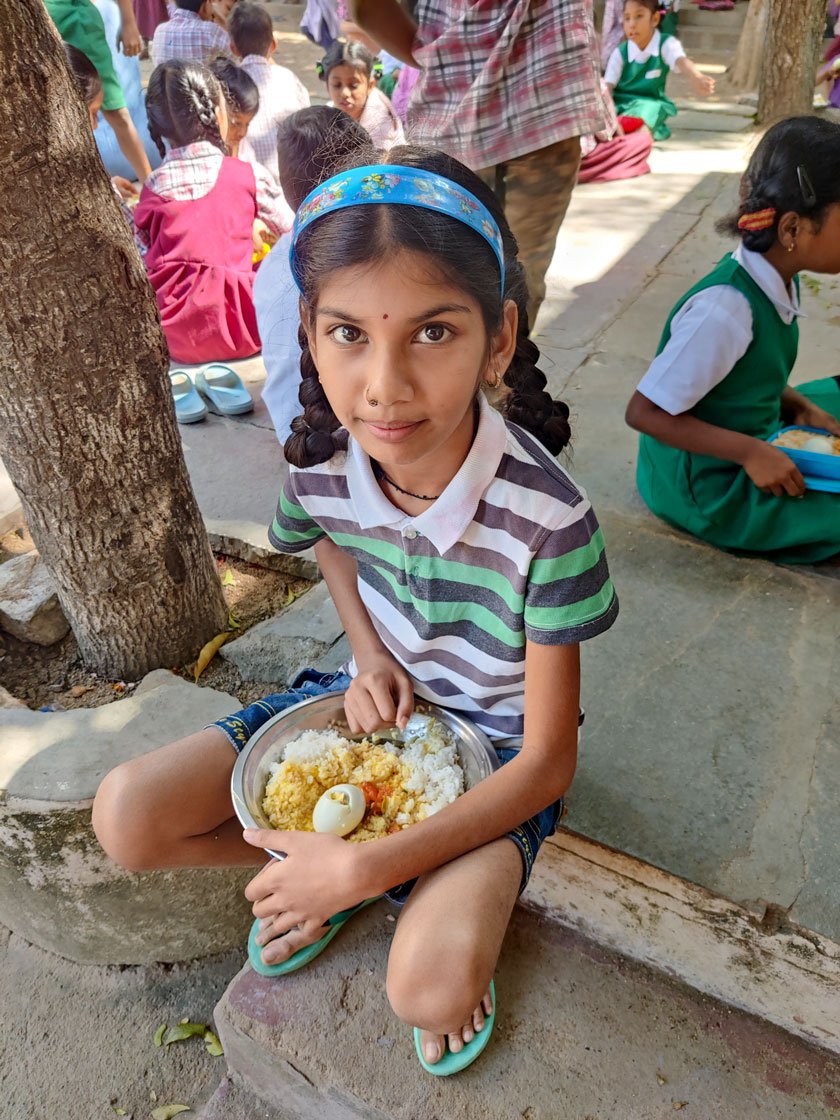
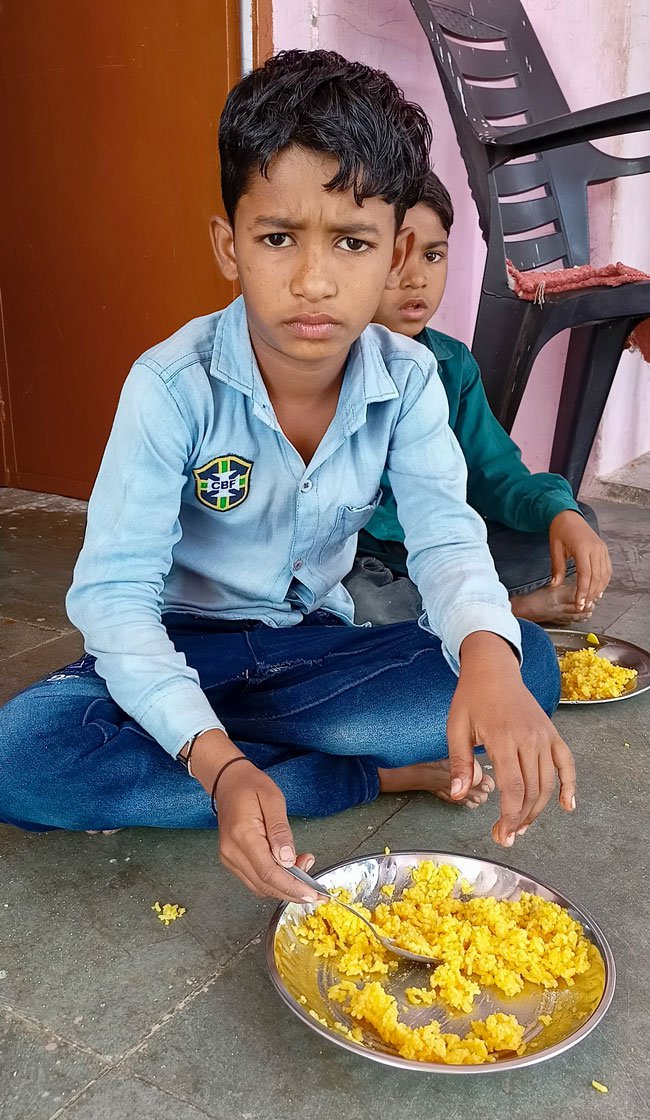
Basavaraju (left) and Ambica (middle) enjoy their school lunch, especially on days they are served egg. Daksh Bhatt (right) is eating his first meal of the day; his breakfast was just a few biscuits
The school meal – consisting of 480 calories and 12 grams of protein for primary school (Class 1-5) and 720 calories and 20 grams of protein for upper primary (Class 6-8) – is essential for children from poor and marginalised communities who otherwise lack access to nutritious food.
At Nammura Government Lower Primary School in Pattanagere locality, Bengaluru city, principal N. Suguna has noticed, “Except for one or two children, all of them eat the free lunch at school.” These are children of migrant labourers from Yadgir (also spelled Yadgiri) district in north Karnataka who work on construction sites in Bengaluru city.
The mid-day meal scheme, renamed as ‘Pradhan Mantri Poshan Shakti Nirman’ or ‘ PM Poshan ’ in 2021, is aimed at “enhancing enrollment, retention and attendance and simultaneously improving nutritional levels among children.” A centrally-sponsored national programme since 1995, it is implemented by every state and union territory of India. At the Government Primary School in Matia village of Raipur district, Chhattisgarh, headmistress Poonam Jadhav looks around smiling at the 80-odd students eating their lunch. “Few parents can afford this lunch for their children,” she points out. “The beauty of this mid-day meal is also that they sit and eat together, something the children enjoy the most.”
While the basic meal is made of food grains, pulses and vegetables – cooked with oil or fat, salt and spices – many states have added their own flavours to the menu, including supplementary nutrition items, says a 2015 report of the education ministry. Jharkhand, Tamil Nadu and Kerala have added eggs and bananas, while Karnataka gives a glass of milk (and eggs from this year). Chhattisgarh, Assam and Arunachal Pradesh encourage kitchen gardens to grow the vegetables that can be added to the meal. Goa has women’s self-help groups supplying the food while Manipur and Uttarakhand encourage parents to help. In states like Gujarat and Maharashtra, the local community voluntarily supplies nutritious items to add to the meal.
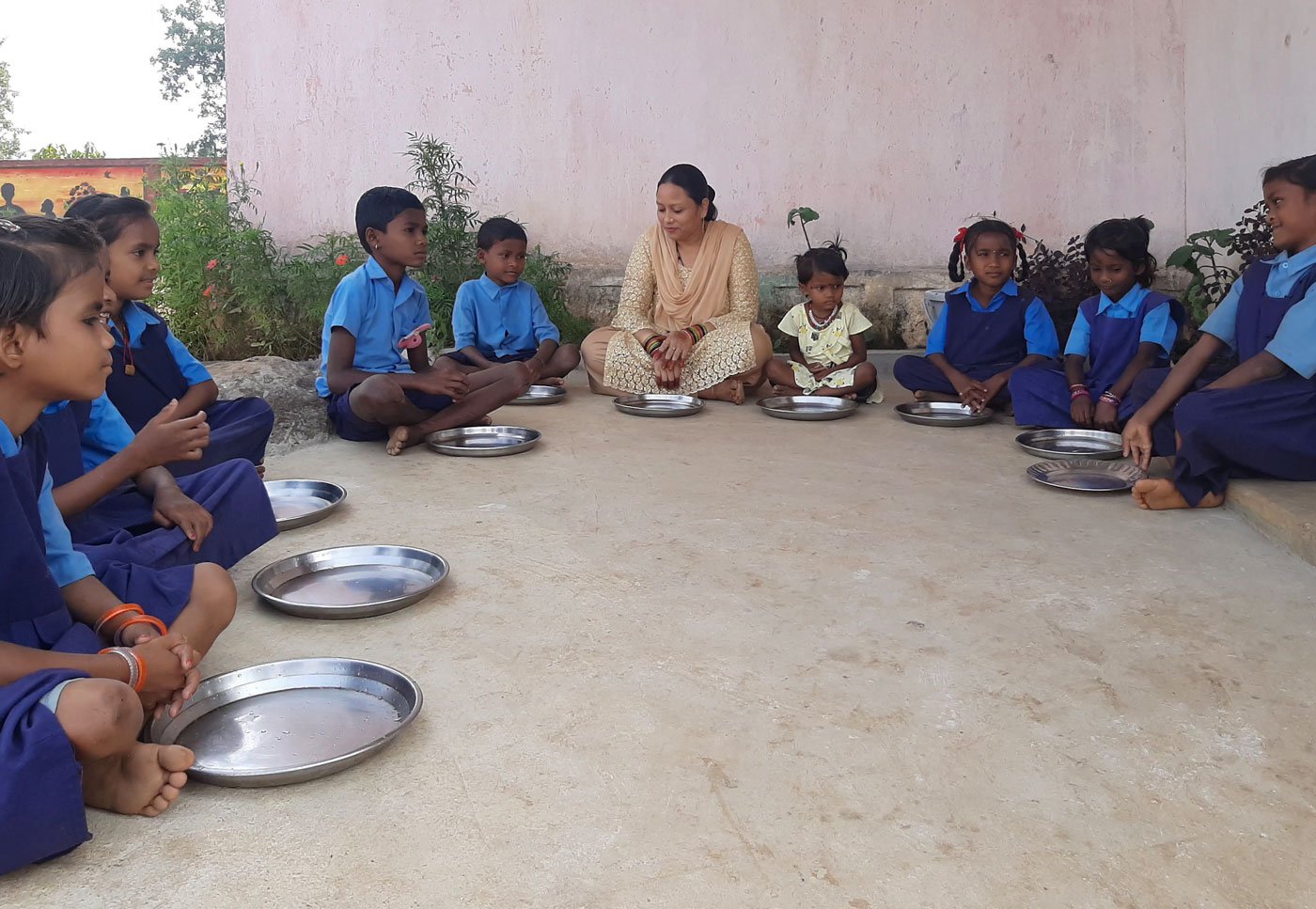
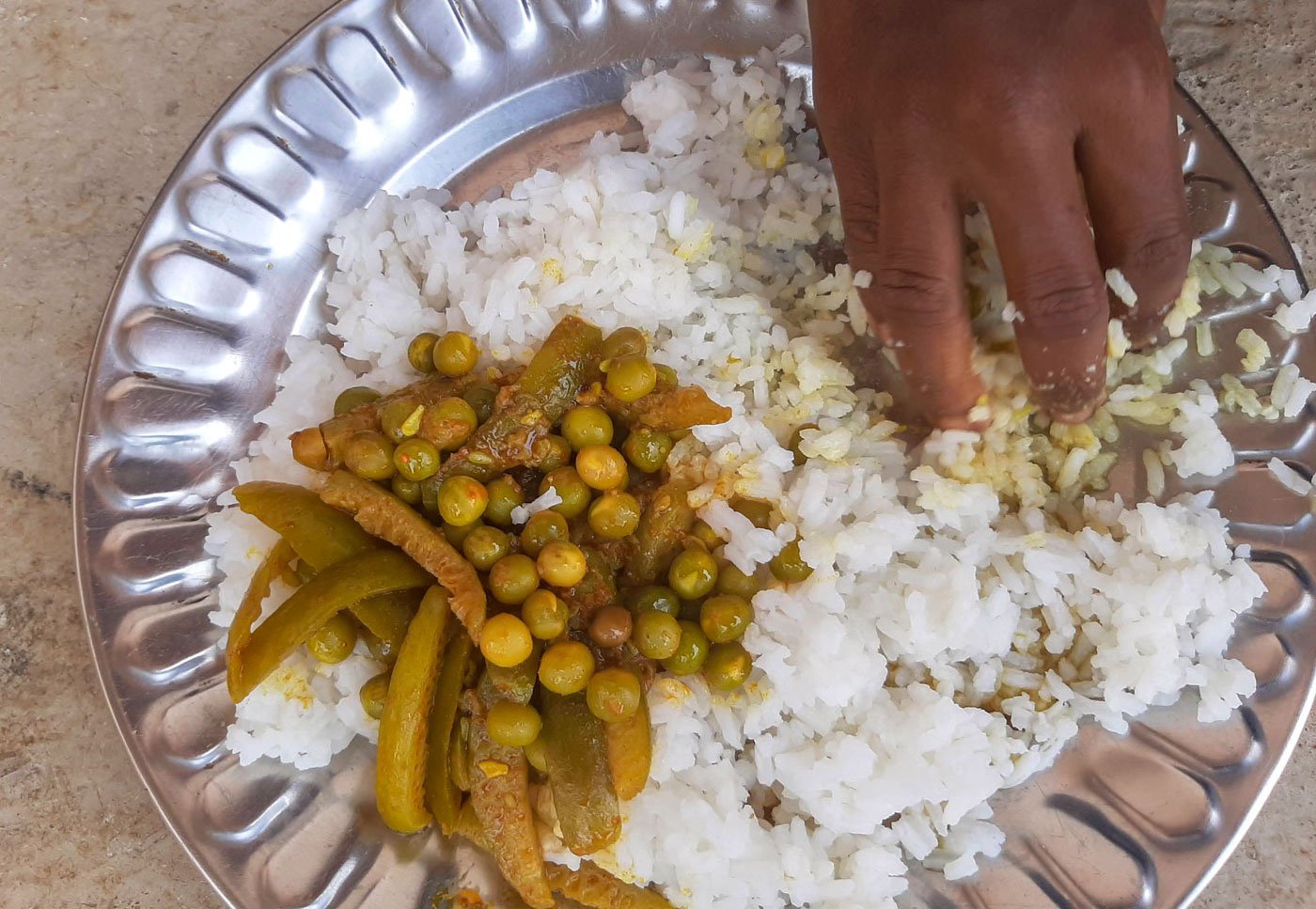
Left: Children from Kamar community at the Government Primary School in Footahamuda village, Chhattisgarh. Right: Their mid-day meal of rice, dal and vegetable
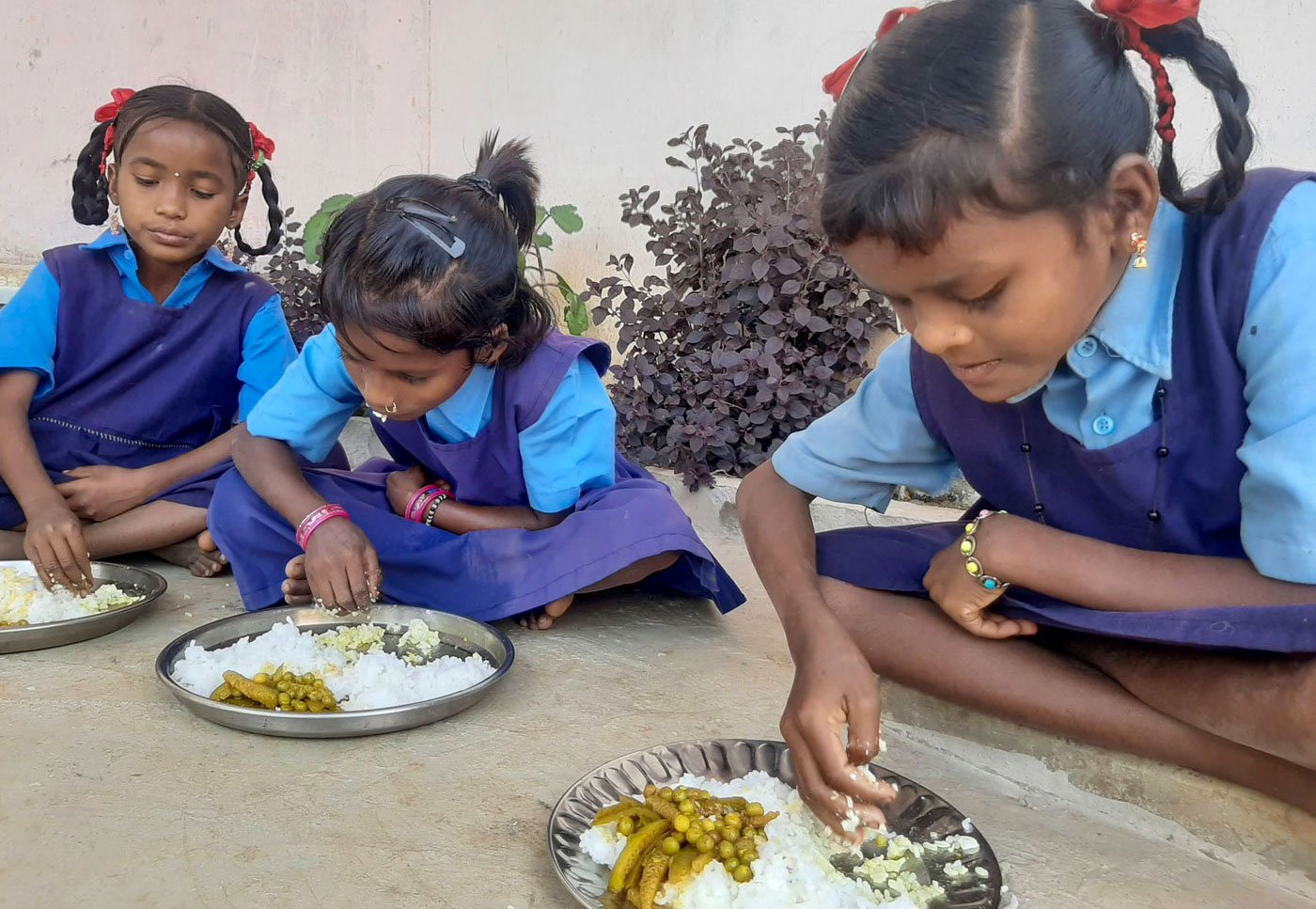
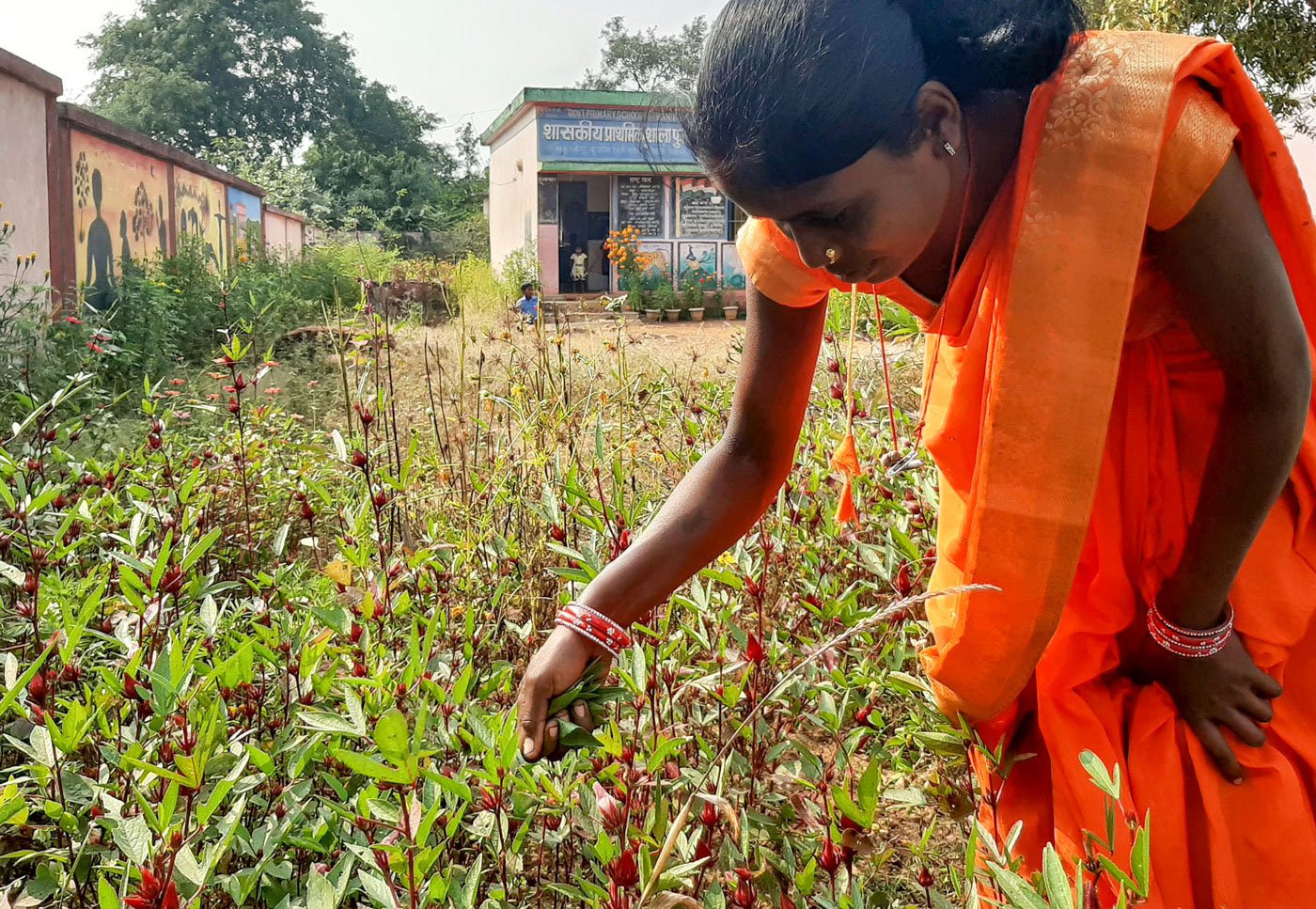
Left: Kirti (in the foreground) is a student of Class 3 at the government school in Footahamuda
. Right: The school's kitchen garden is a source of vegetables
At the Government Primary School in Chhattisgarh’s Footahamuda village, all the 10 students belong to the Kamar community, listed as a PVTG (Particularly Vulnerable Tribal Group) in the state. “The Kamars go to the forest every day to collect forest produce and wood for fuel. They are assured that their children will have food in the school and will study as well,” says Rubina Ali, the sole teacher in charge of this small school in Nagri block of Dhamtari district.
In another forest area – Sathyamangalam in Tamil Nadu – at a state-run tribal residential school in Thalaimalai village of Gobichettypalayam
taluk
in Erode district, 160 children, mostly from Soliga and Irula communities (both Scheduled Tribes), enjoy the usual rice-
sambar
and the egg curry that they get a few times a week.
The total outlay for PM-Poshan from 2021-22 to 2025-26 is Rs. 130,794 crore – shared by the Centre and the states. Fund distribution and the transfer of food grains – over six lakh metric tonnes – sometimes glitches, and so teachers and cooks end up buying food grains from the market. In Igrah village in Haryana, a teacher at the state-run Shaheed Hawaldar Rajkumar RVM Vidyalay told PARI that when this happens, “We teachers contribute so that the children do not go hungry.” This school in Haryana’s Jind district serves pulao , dal and rice, and rajma -rice, to children of woodcutters, daily wage workers, brick kiln workers and others.
The push for feeding India’s poor children has not come a moment too soon. A shocking 32 per cent of children under the age of five are underweight, according to the National Family Health Survey 2019-21 (
NFHS-5
). Malnutrition was responsible for 69 per cent of deaths in children under five years in the country, a 2019
UNICEF report
had noted.
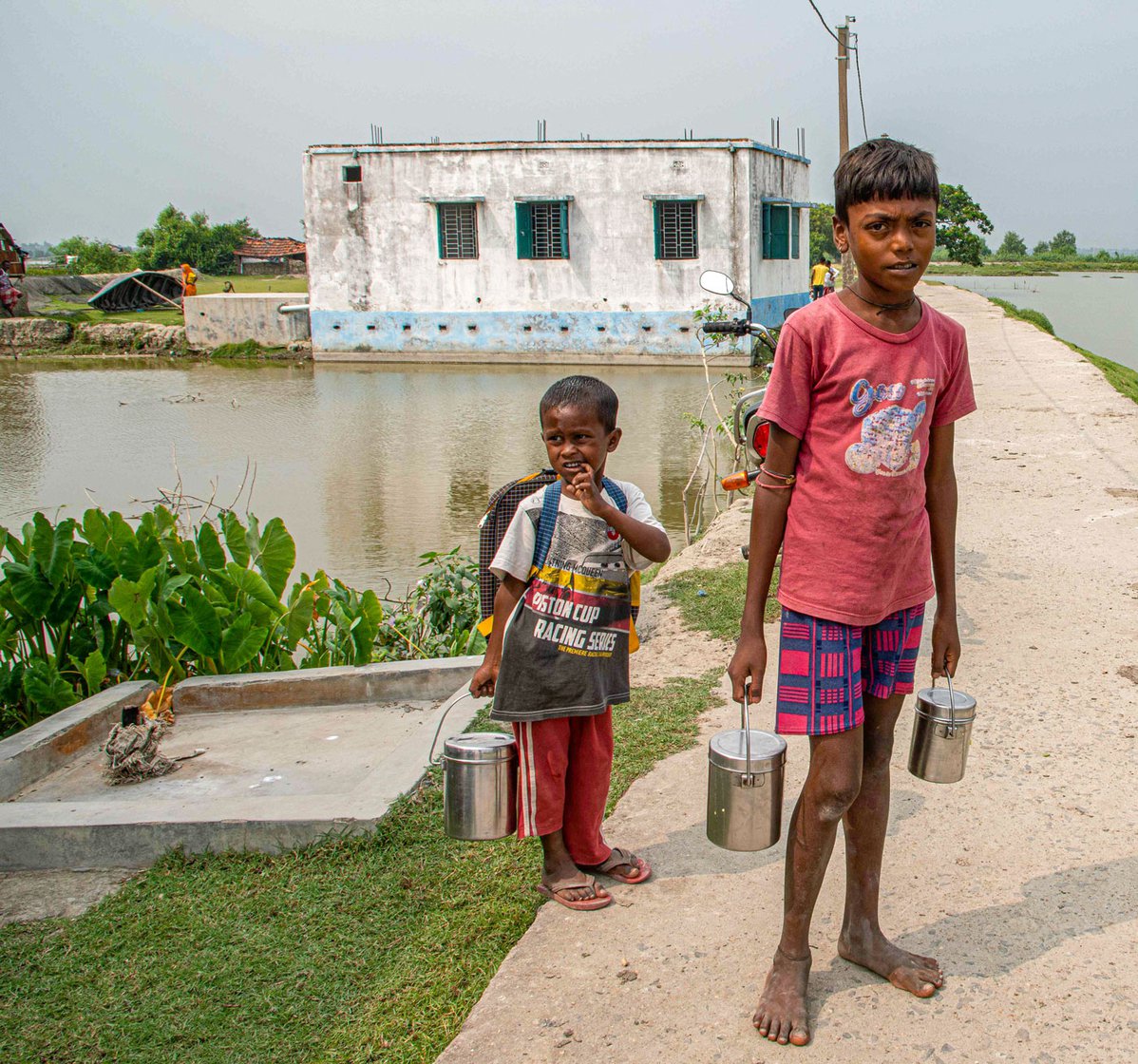

Even during the Diwali vacation, children from Andul Pota village (left) came to Dhopaberia Sishu Skikha
Kendra, in Basirhat II block of North 24 Parganas district, to pick up their lunch. Ronny Singha (right) was there for his share of
khichdi
A dire fact that explains why even on a holiday, eight-year-old Ronny
Singha comes with his mother to Dhopaberia Sishu Skikha Kendra in West
Bengal’s Andul Pota village, to pick up his share of
khichdi
. Locals refer to the school as ‘
khichdi
school’, and around 70 children are on the rolls. When PARI visited it
in late October, in North 24 Parganas district of West Bengal, the
school was closed for the Diwali holidays – but the children were coming
to eat or pick up their daily lunch.
Most of the children are from underprivileged backgrounds and their parents work in the local fisheries. Ronny’s mother (who didn’t want to share her name) also said, “the school was a great support during the pandemic [Covid-19] as they regularly supplied cooked food.”
When Covid-19 struck in March 2020, the mid-day meal scheme was interrupted in several states. Lakhs of children were affected due to the closure of schools; in Karnataka, the High Court ruled that the mid-day meal was directly linked to the fundamental right to education.
Aishwarya is a student at a primary school in P. Janardhan Reddy Nagar, a low-income housing area near Gachibowli in Telangana. Her father is a daily wage worker on construction sites in Ranga Reddy district and her mother is a domestic worker. The hungry nine-year-old says, “I wish the school served eggs every day. I wish they gave us more than one egg per day.”
Despite its salient role in feeding masses of children, the mid-day meal scheme has been afflicted by corruption, adulteration, poor quality and variety of food, and caste-discrimination. In Gujarat and Uttarakhand, food made by Dalit cooks was boycotted by upper caste students in the last year, in one instance even leading to the alleged sacking of a Dalit cook.
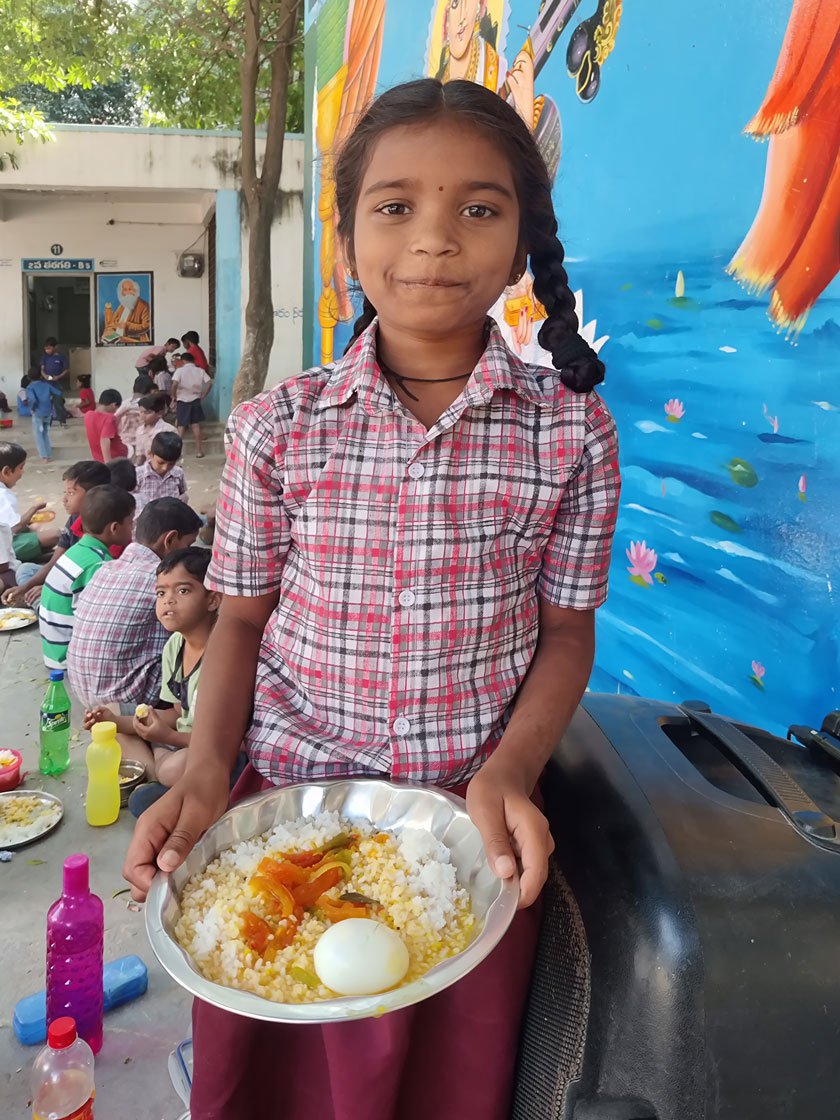
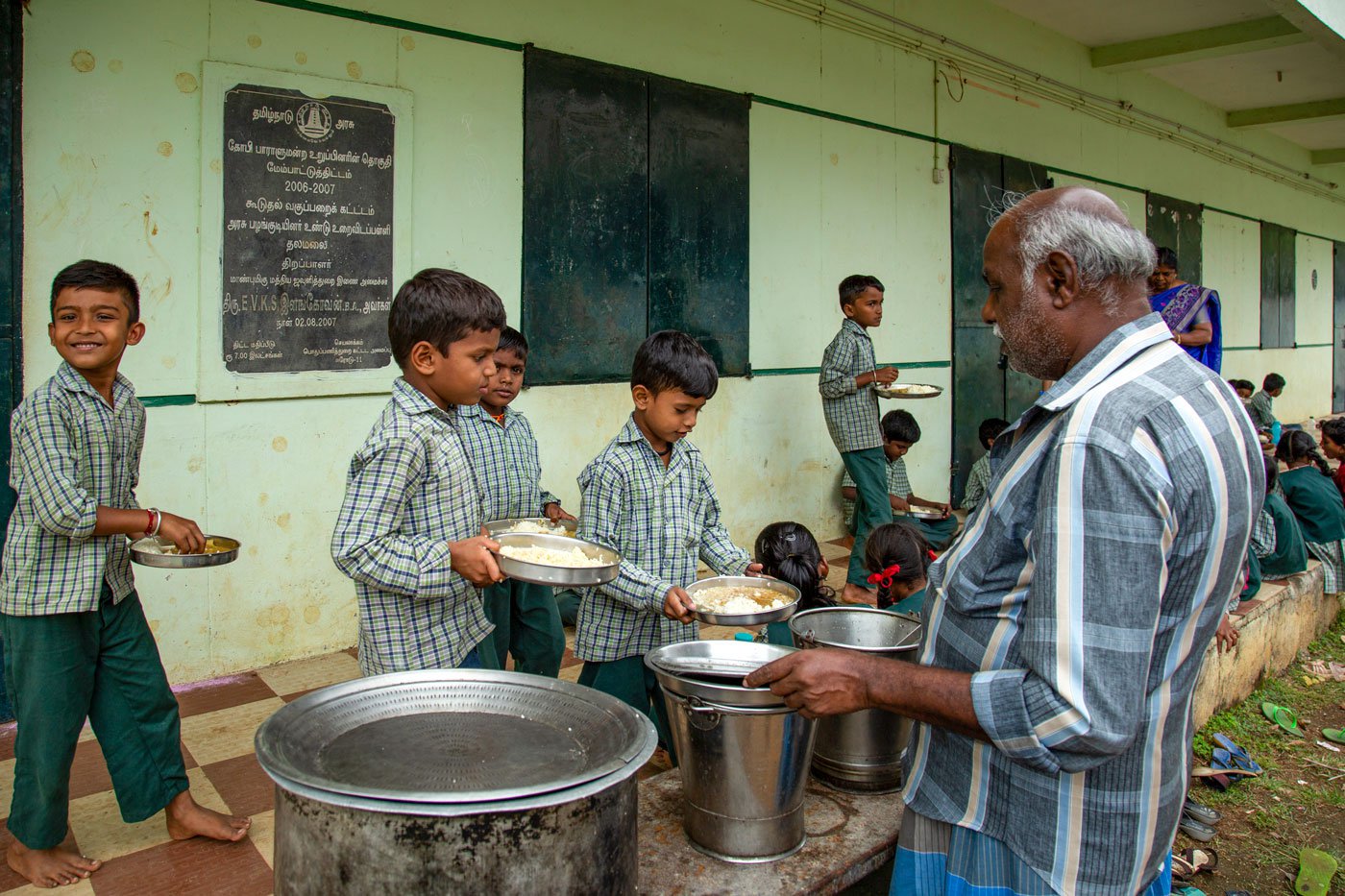
Left: Aishwarya wishes they would serve eggs more often at her primary school in
Serilingampally mandal, Telangana. Right: Mid-day meals being served to children at the tribal residential school in Thalaimali, in the Sathyamangalam forest area of Tamil Nadu
In Karnataka, the number of children under five years who are stunted decreased only
one
percentage point between 2015-16 and 2019-20 – from 36 to 35 per cent (
NFHS-5
). Further, a 2020 government
report
called attention to nutritional deficiencies in children in Kodagu and Mysore districts. But political parties are only squabbling over whether eggs in mid-day meals are vegetarian or not.
Given the nutrition crisis in the country, it’s surprising why schools are being shut down in Maharashtra, which has 6.16 lakh malnourished kids – a little under a fifth of all malnourished kids in India. At one such school in Gundegaon village in Ahmednagar district, most of the students are Pardhis. A Denotified Tribe, the Pardhi community is among the poorest and most disadvantaged in the state.
“After the school shuts down, these children will not only drop out [of schooling] but will also be deprived of a nourishing meal. This could increase undernourishment and number of dropout kids among tribal and underprivileged communities,” says Kusalkar Dnyandev Gangaram, principal of Pautkavasti Gundegaon Primary Zilla Parishad School.
Manjur Bhosale's eight-year-old daughter, Bhakti, is among the 15 Pardhi students here. “No school, no food. Three years of corona were very bad,” Manjur says. “If schools close once again, how will our children get ahead?”
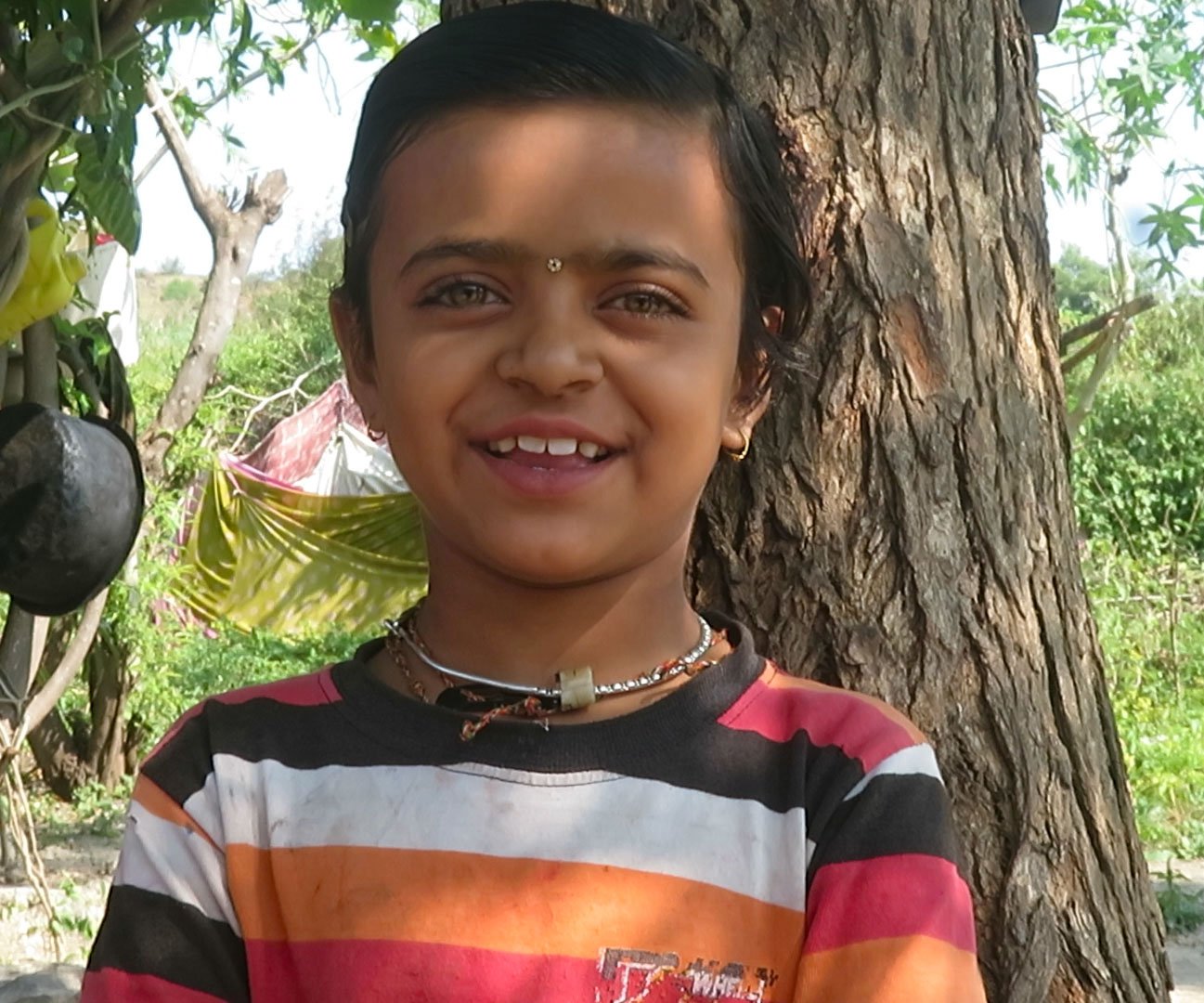
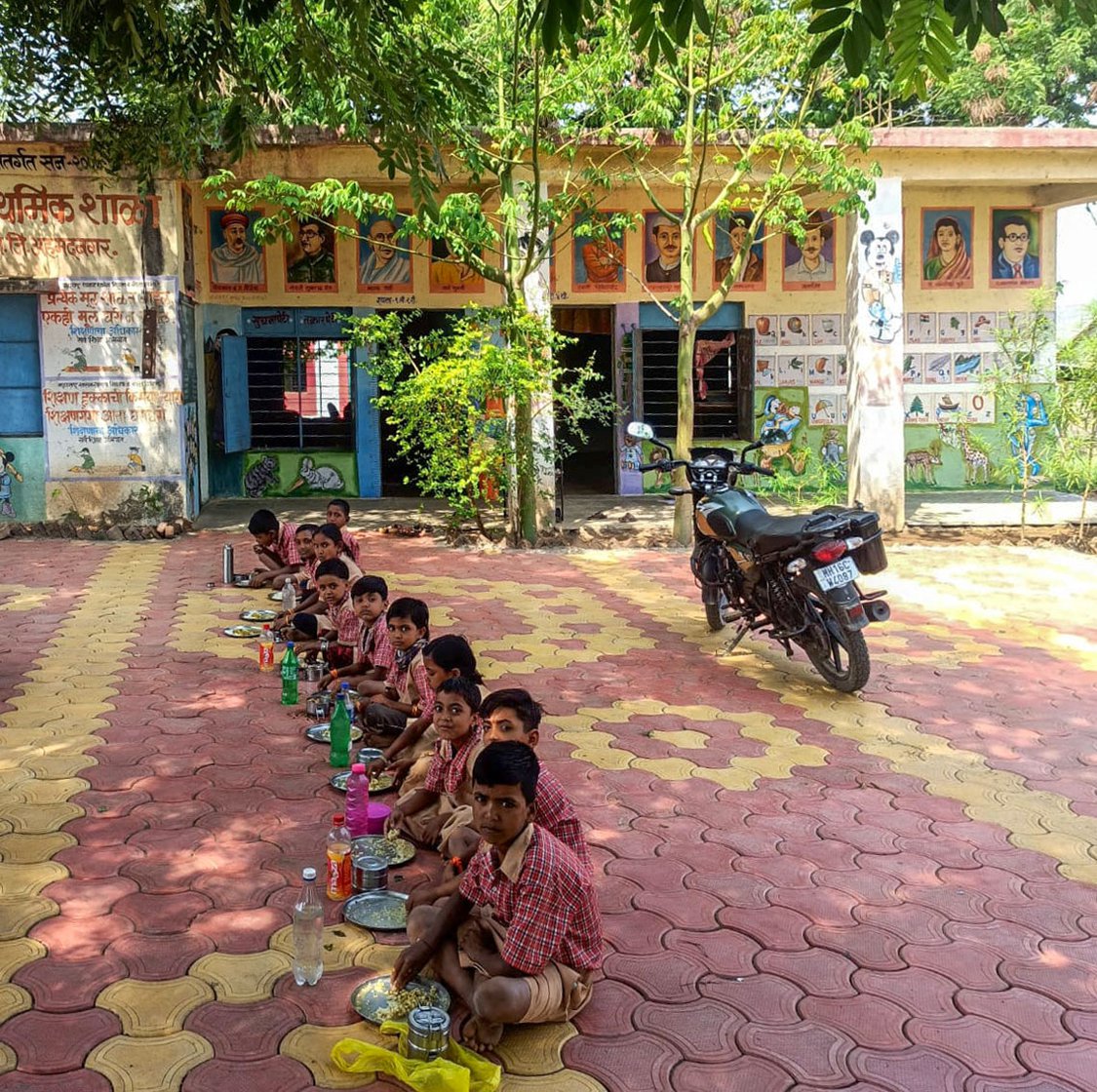
Bhakti Bhosale (left) is a student of Pautkavasti Gundegaon Primary Zilla Parishad School in
Ahmednagar district, Maharashtra. The school is being shut down, and Bhakti and others like her will lose their school lunch
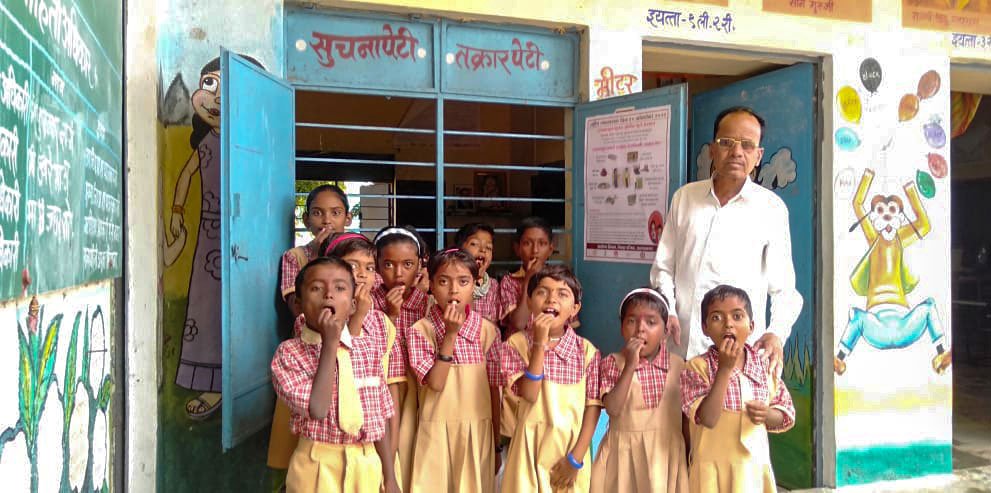
'After the school
shuts down, these children will not only drop out but will also be deprived of
a nourishing meal,' says
Kusalkar Dnyandev Gangaram, principal of the school in
Gundegaon,
seen here with his students
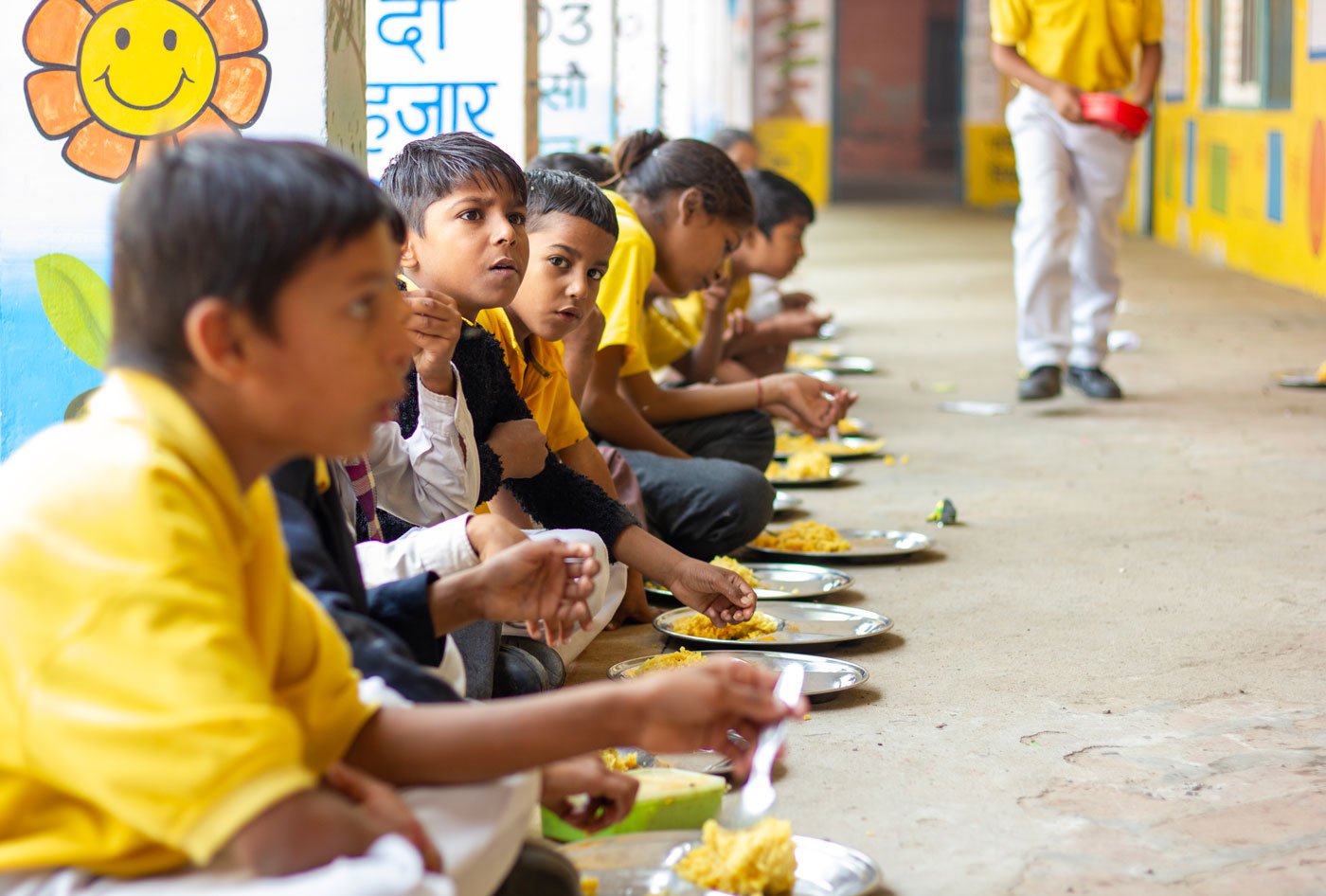
In Jind district, Haryana, when funds for the school lunch are delayed, teachers at Shaheed Hawaldar Rajkumar RVM Vidyalay in Igrah village contribute towards the expenses so that children don't go hungry
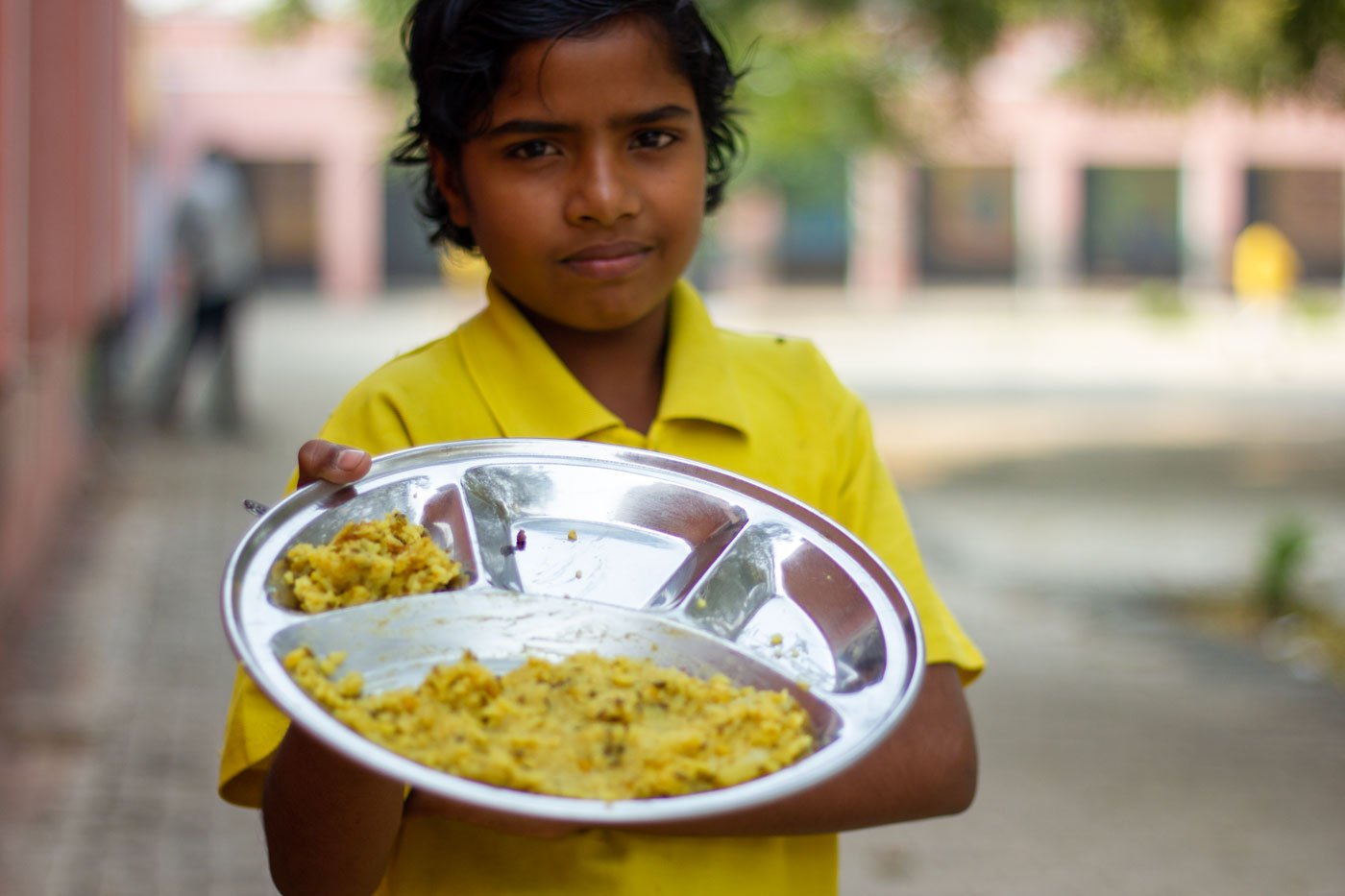
Shivani Nafria, a student of Shaheed Hawaldar Rajkumar RVM Vidyalay in Igrah, showing her school lunch
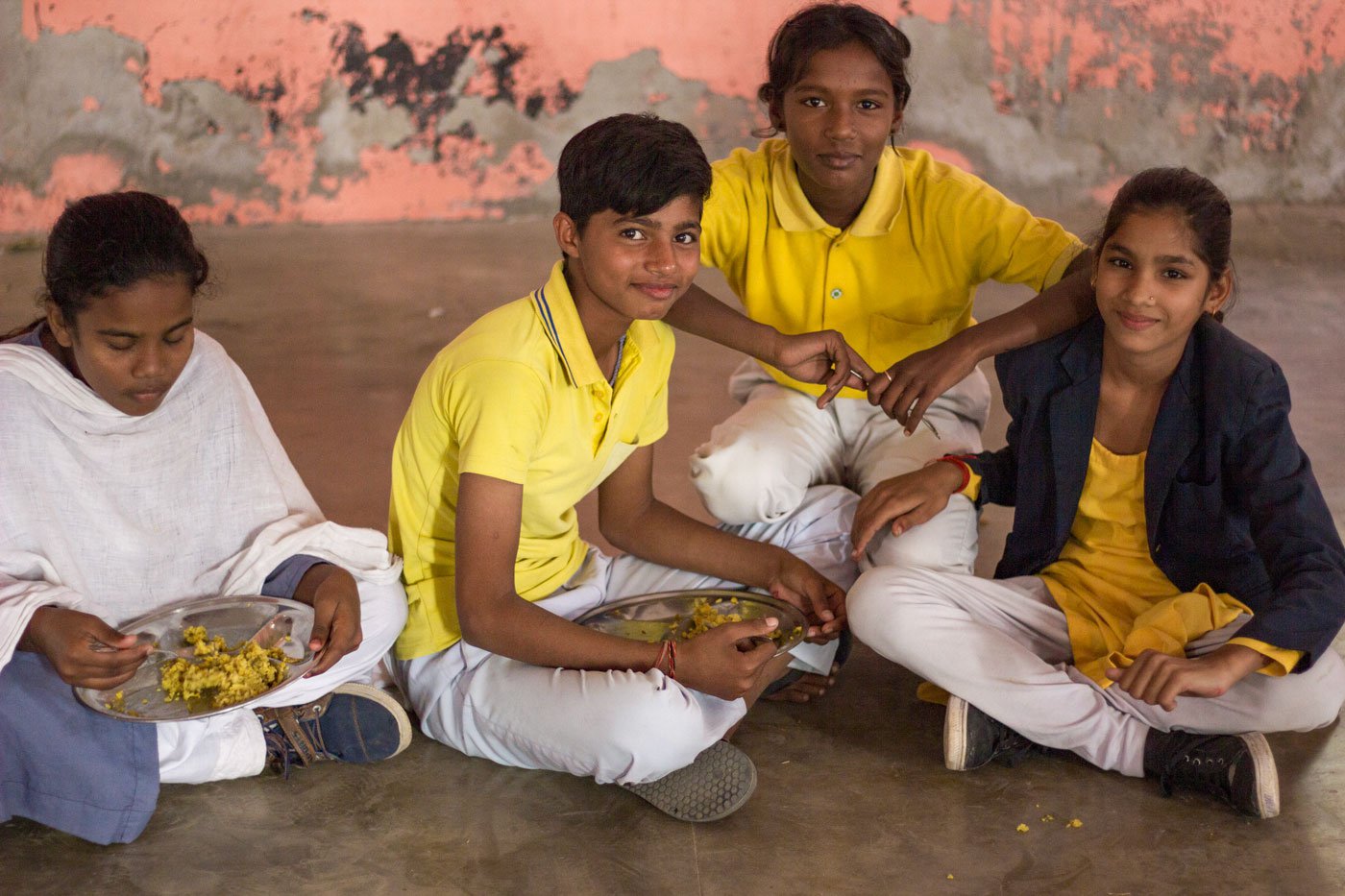
Children
of
Shaheed
Hawaldar Rajkumar RVM Vidyalay eating lunch together
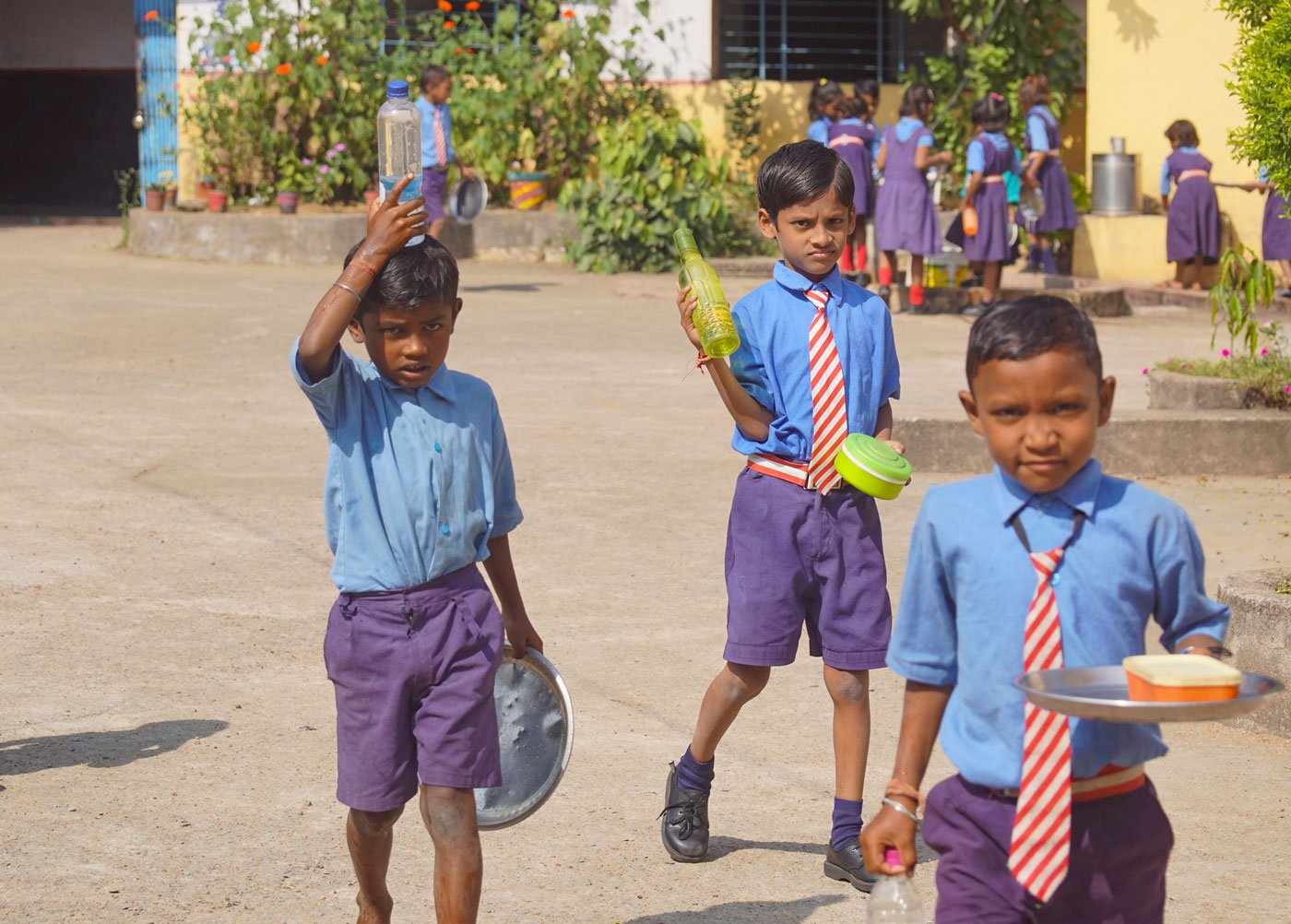
Yash,
Kunal and Jagesh have just finished their mid-day meal at the Government Primary School in Matia village of Chhattisgarh
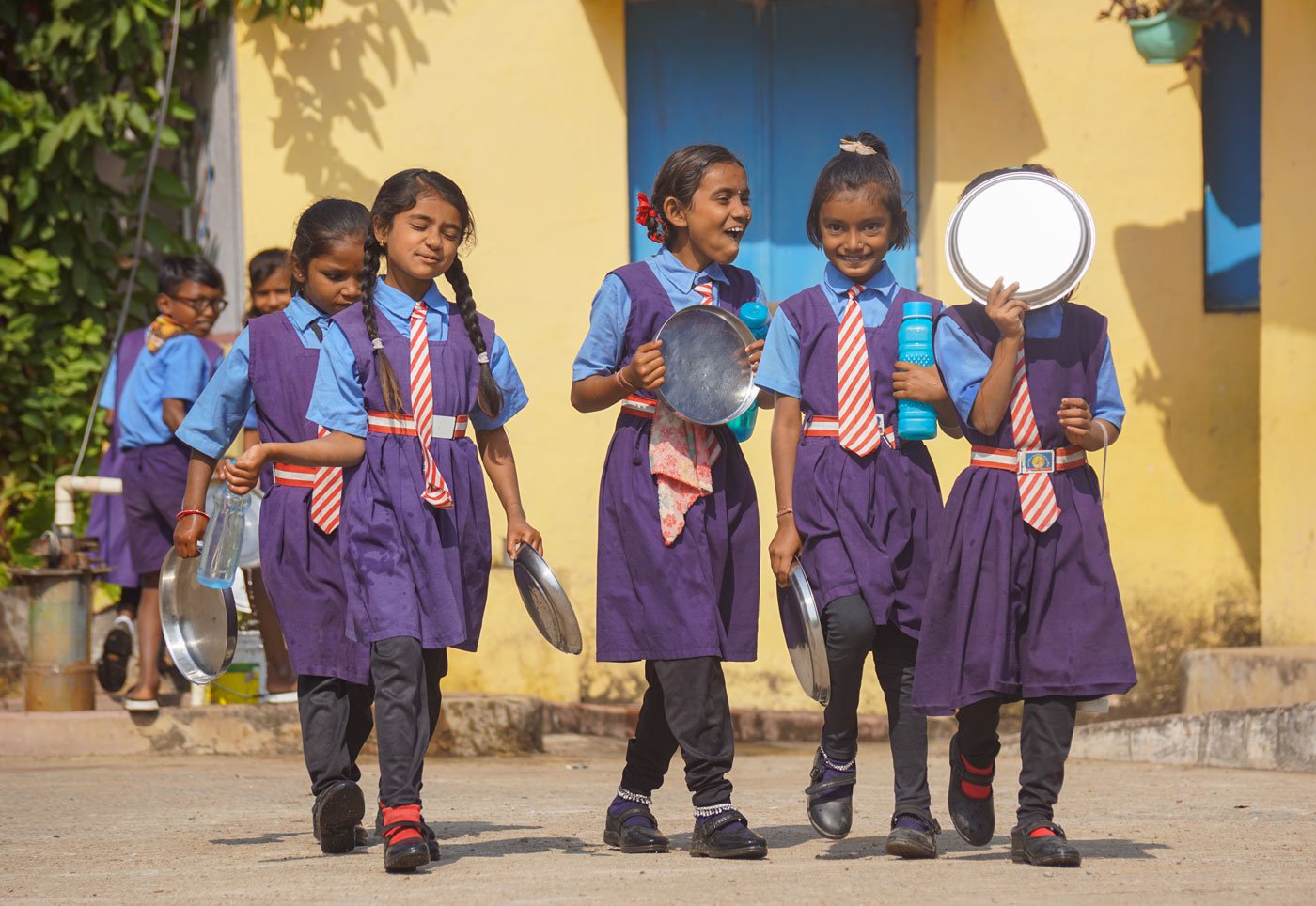
Students at Government Primary School in Matia village, Raipur district, walking back to class after their meal
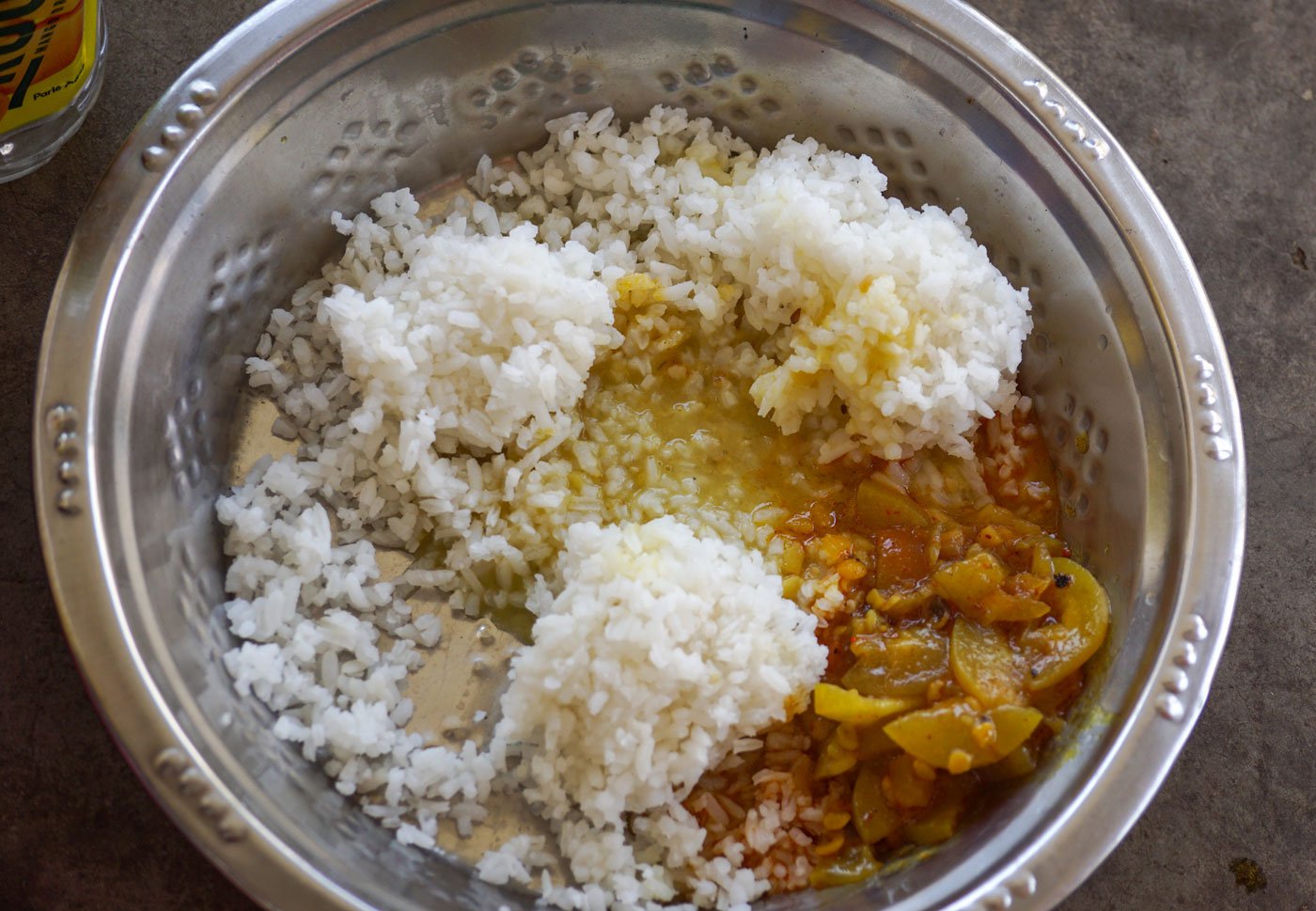
Lunch at the school in Matia has rice,
dal
and vegetable
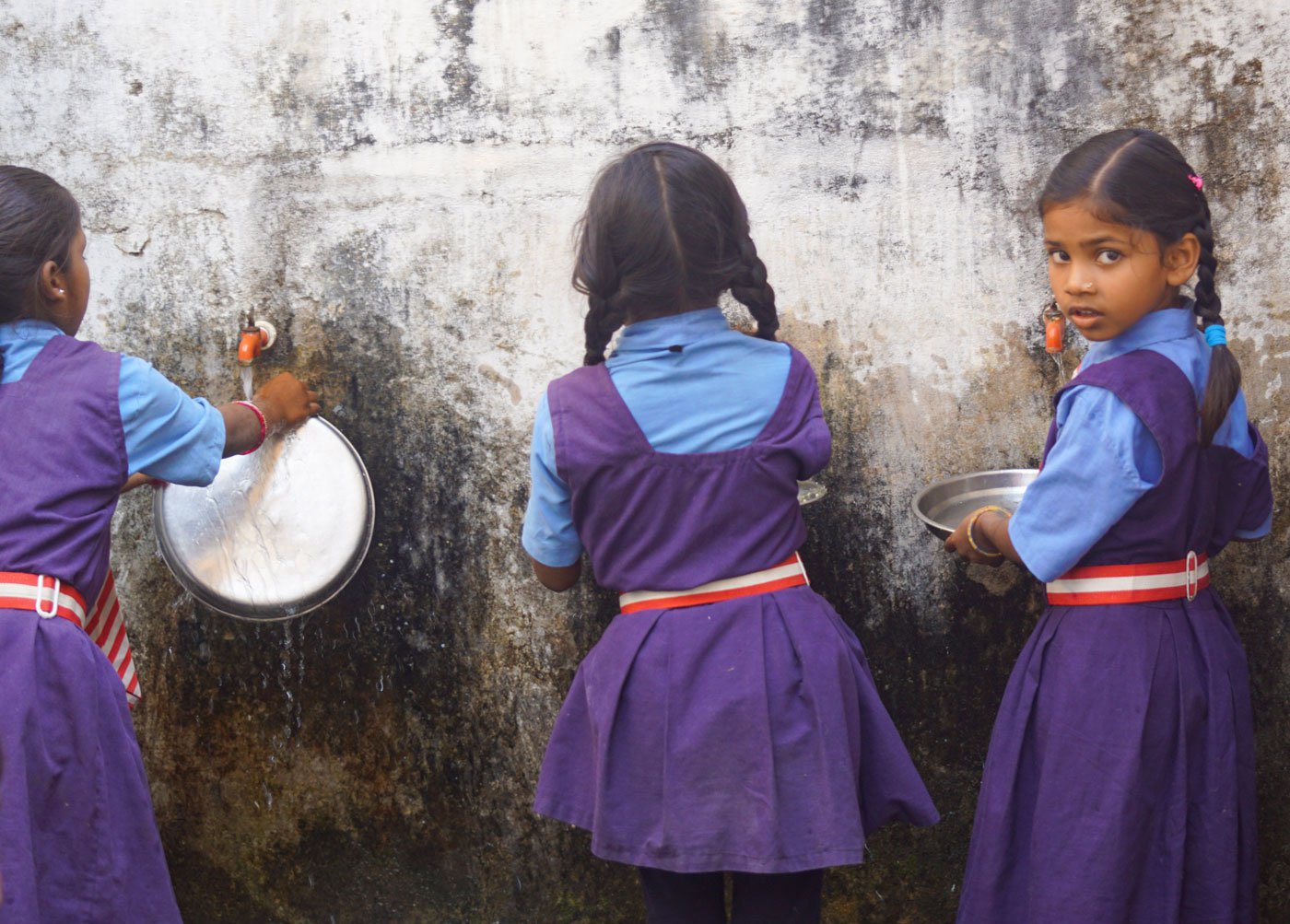
Pakhi (looking at the camera) and her classmates wash their plates after lunch at G
overnment Primary School in Matia, Chhattisgarh
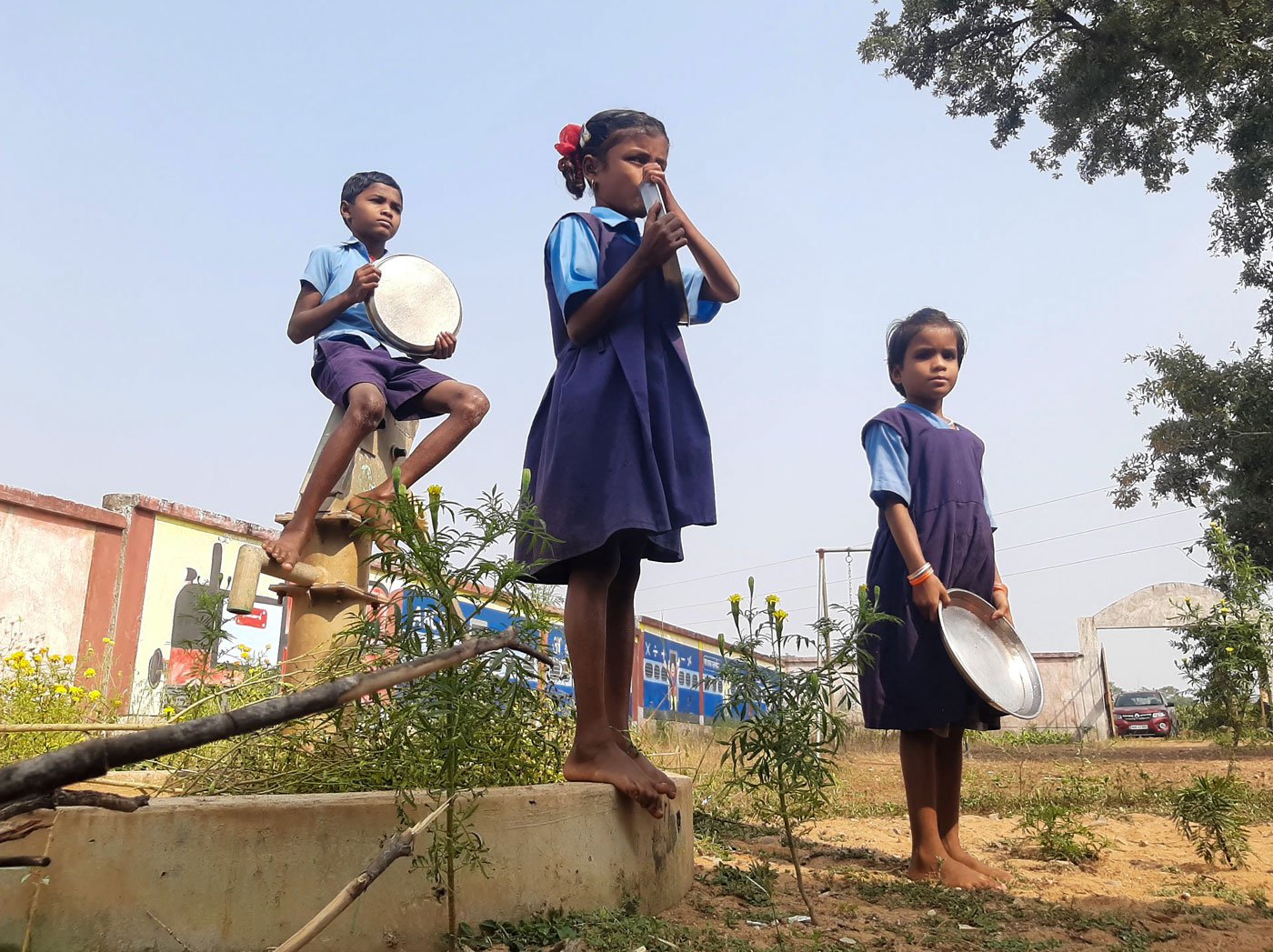
Children waiting to be served their mid-day meal at the Government Primary School in Footahamuda village, Dhamtari district, Chhattisgarh
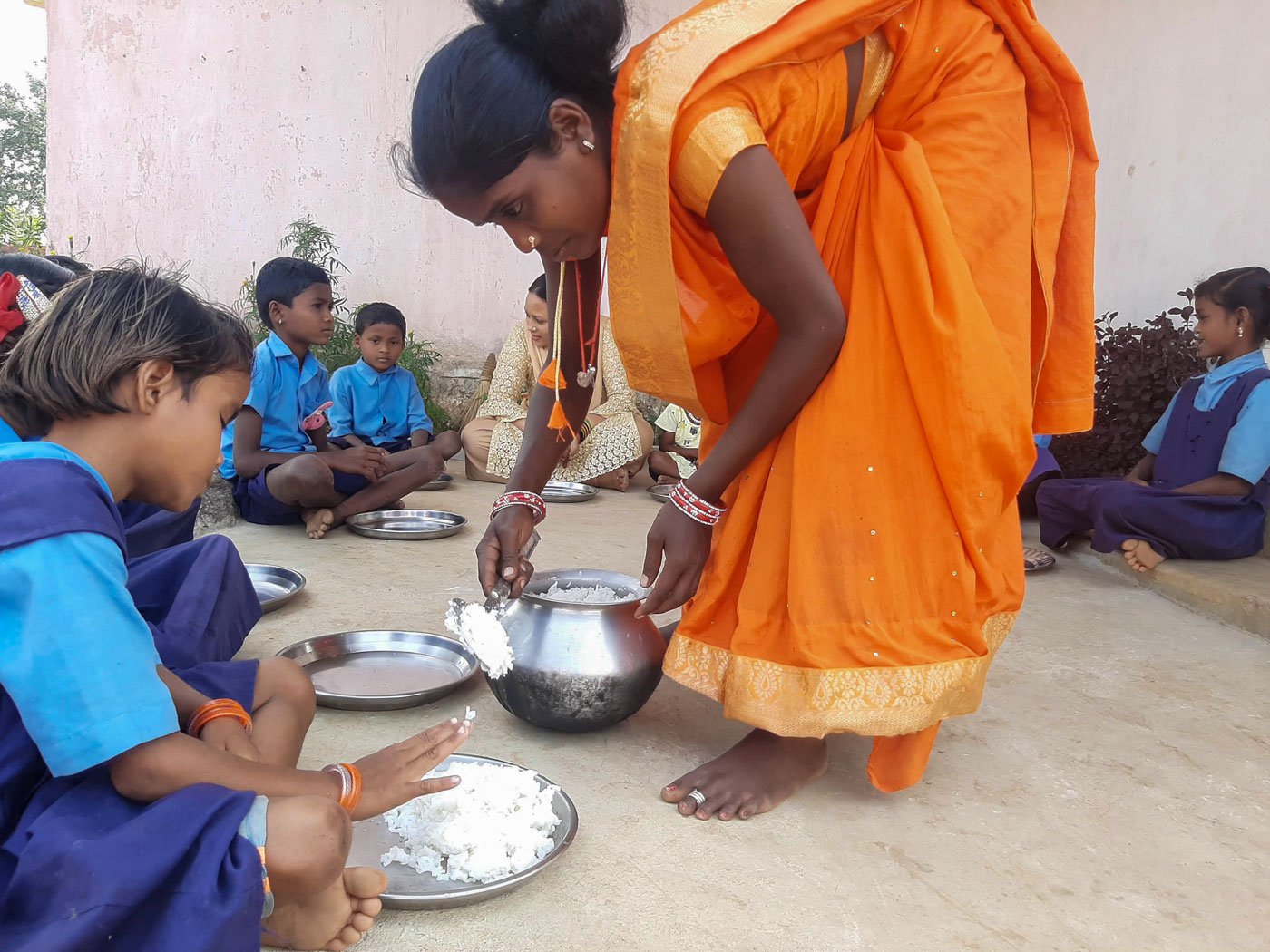
Mid-day meals being served at Government Primary School in Footahamuda
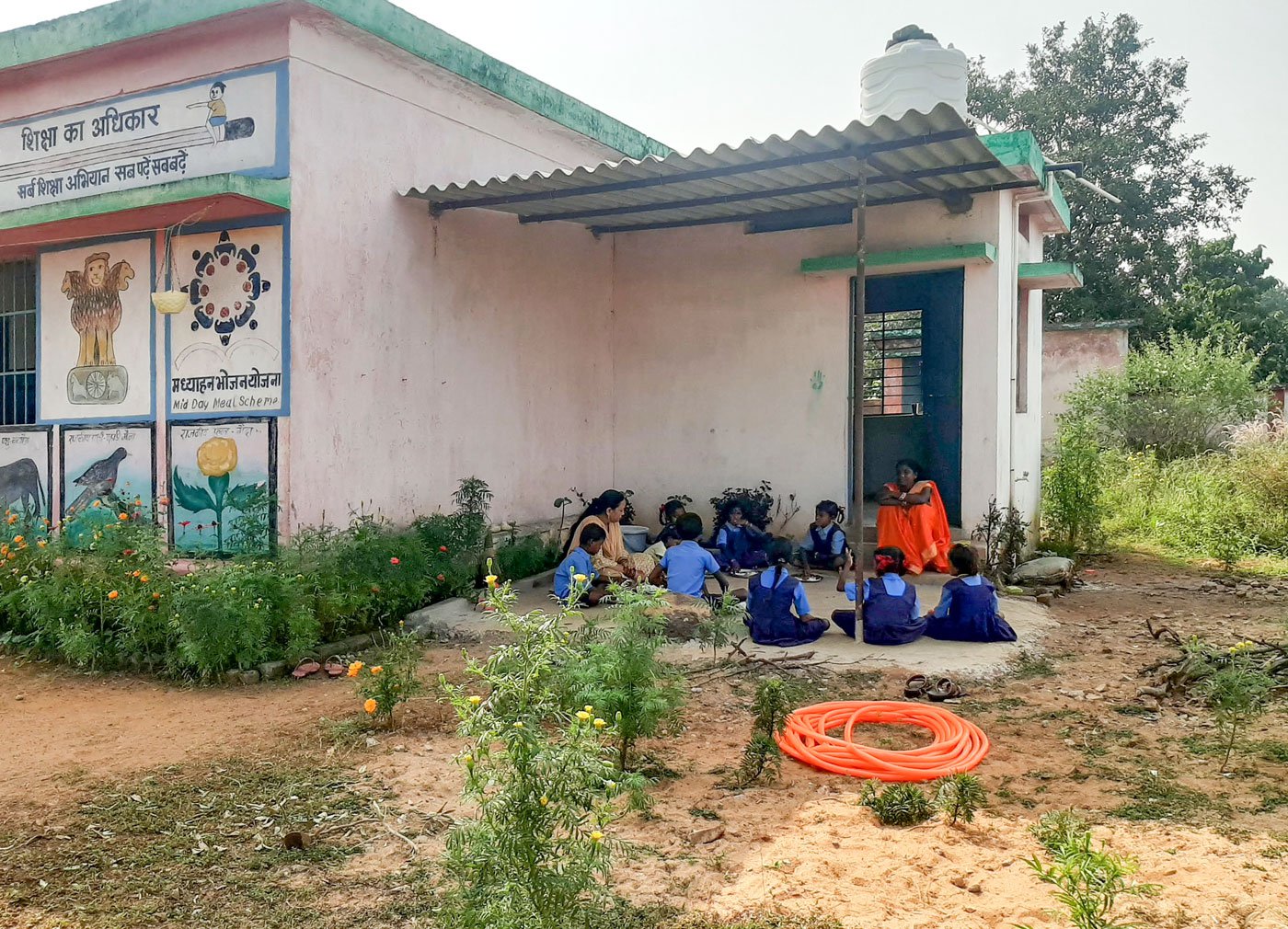
Children eating their meal together at the school in Footahamuda
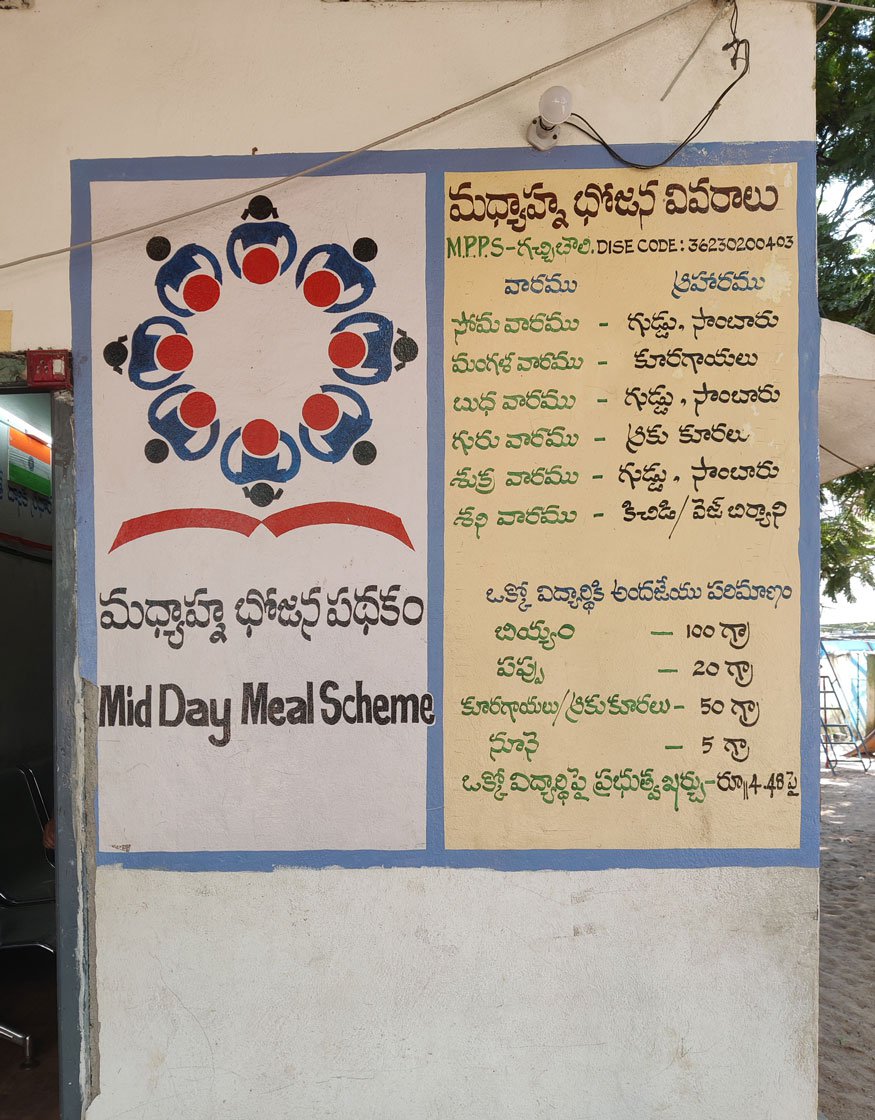
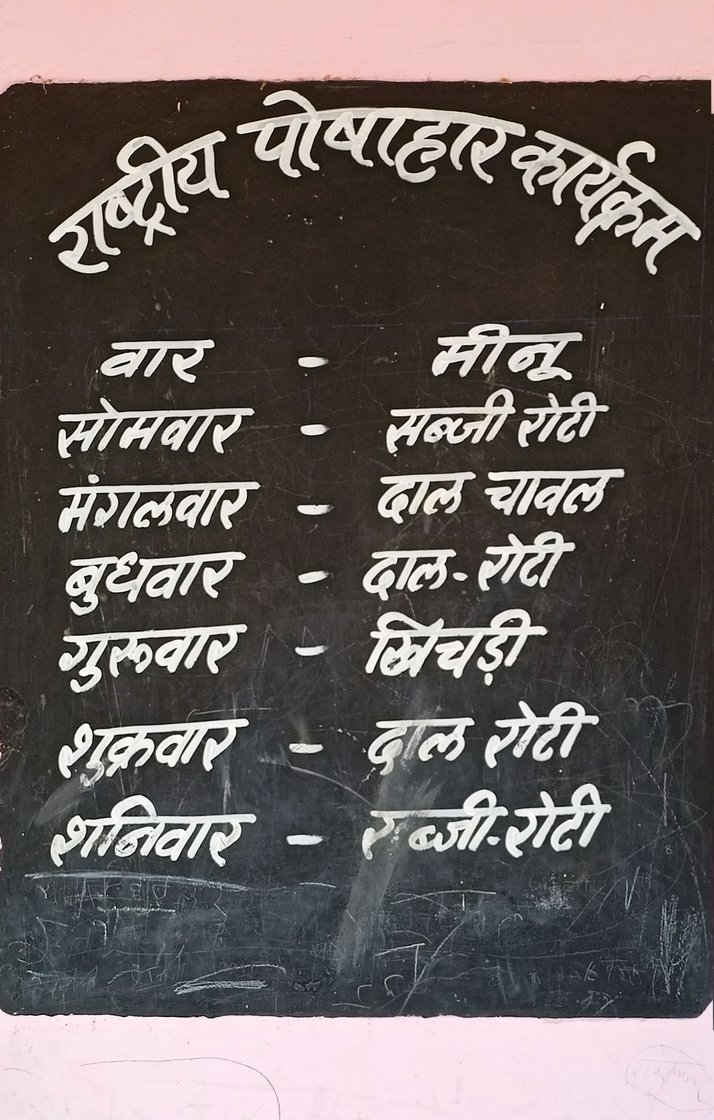
The lunch menu is painted on a wall of the Mandal Parishad Primary School in
Serilingampally,
Ranga Reddy district, Telangana (left), and at the Rajkiya Prathmik Vidyalaya (right) in Jind district of Haryana
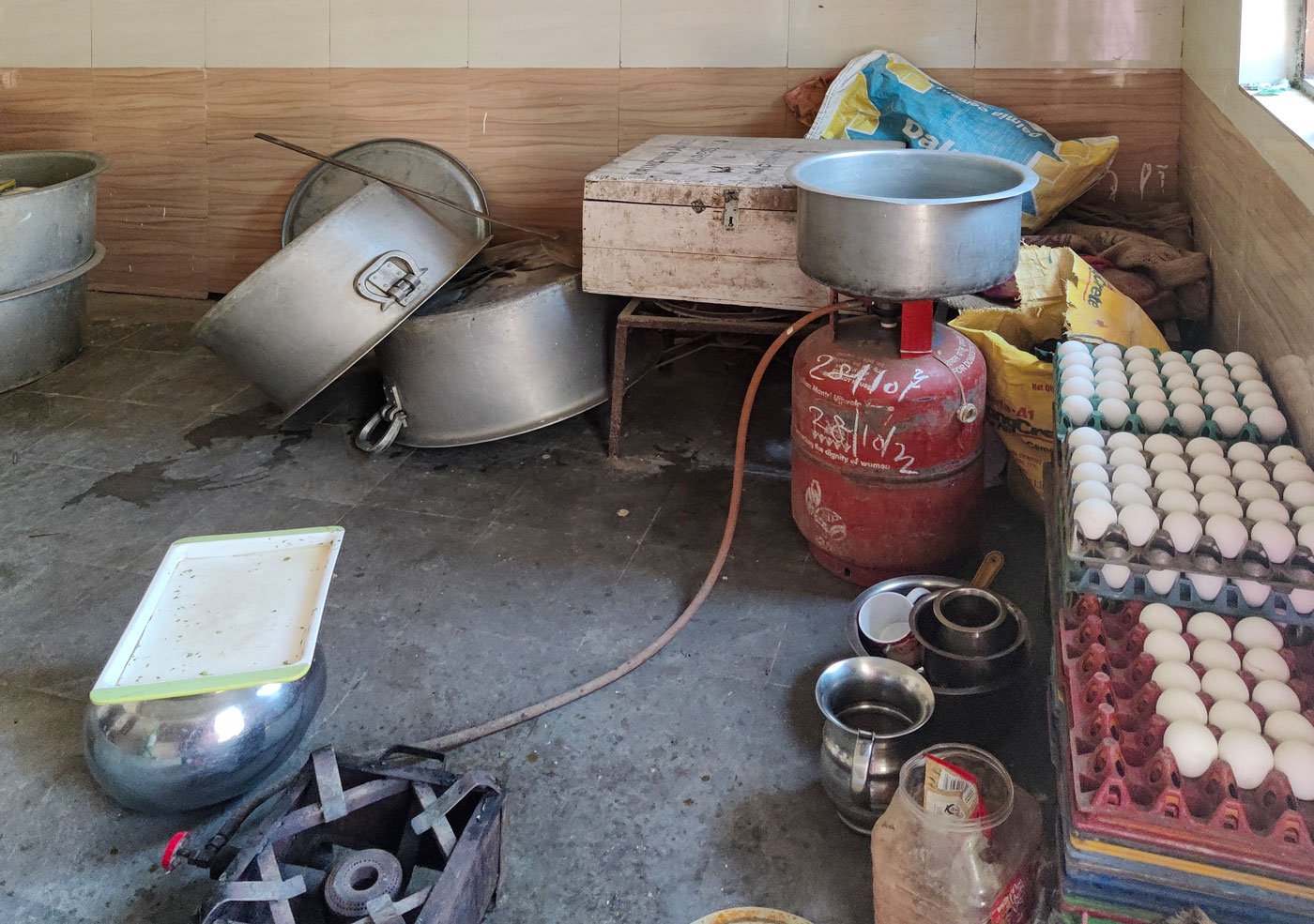
The kitchen where mid-day meals are cooked at the mandal school in
Serilingampally
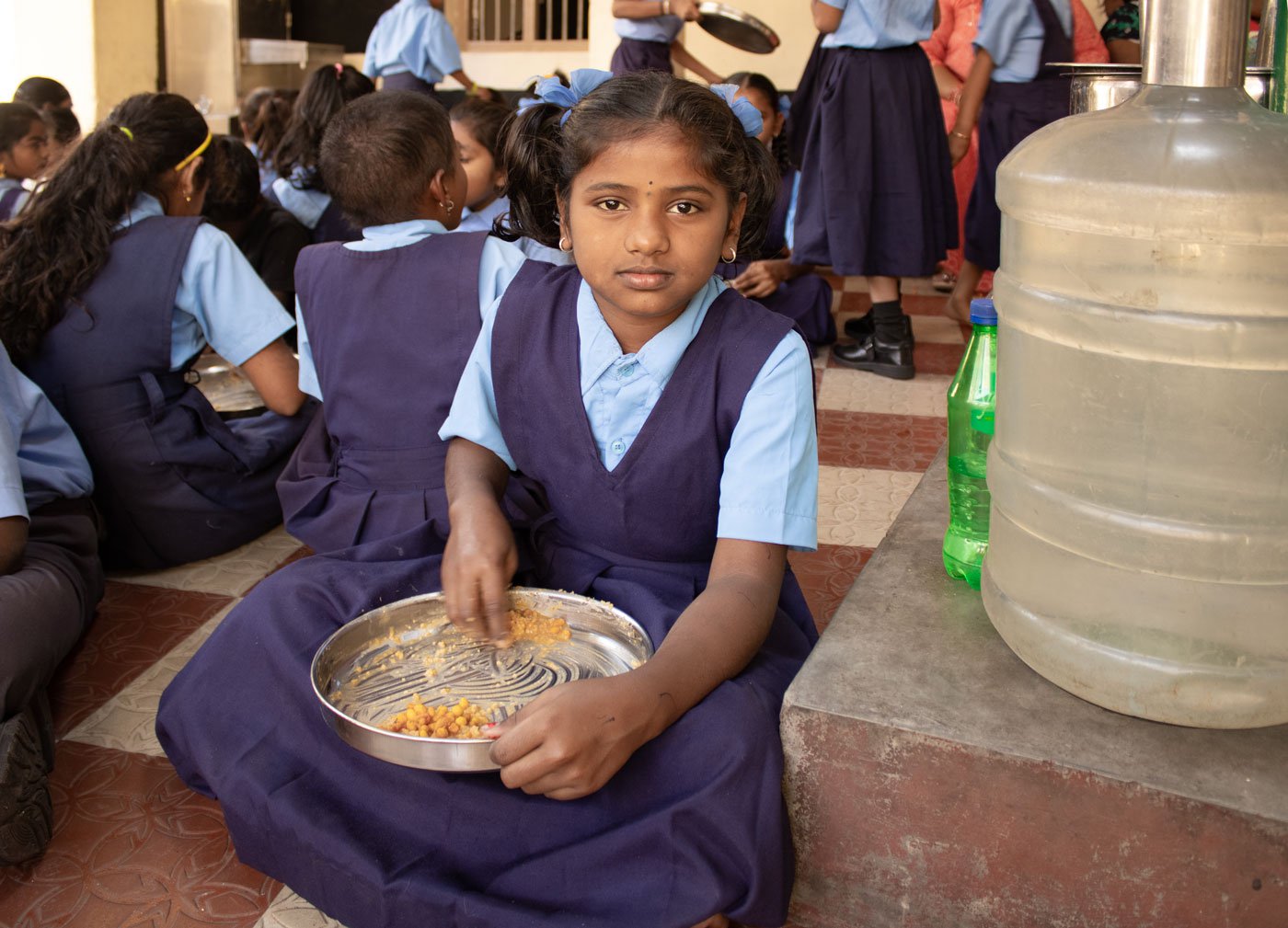
Sanjana S. goes to
Nammura Government Lower Primary School in Bengaluru. She loves
bisi bele bath
and always takes a second helping at lunch
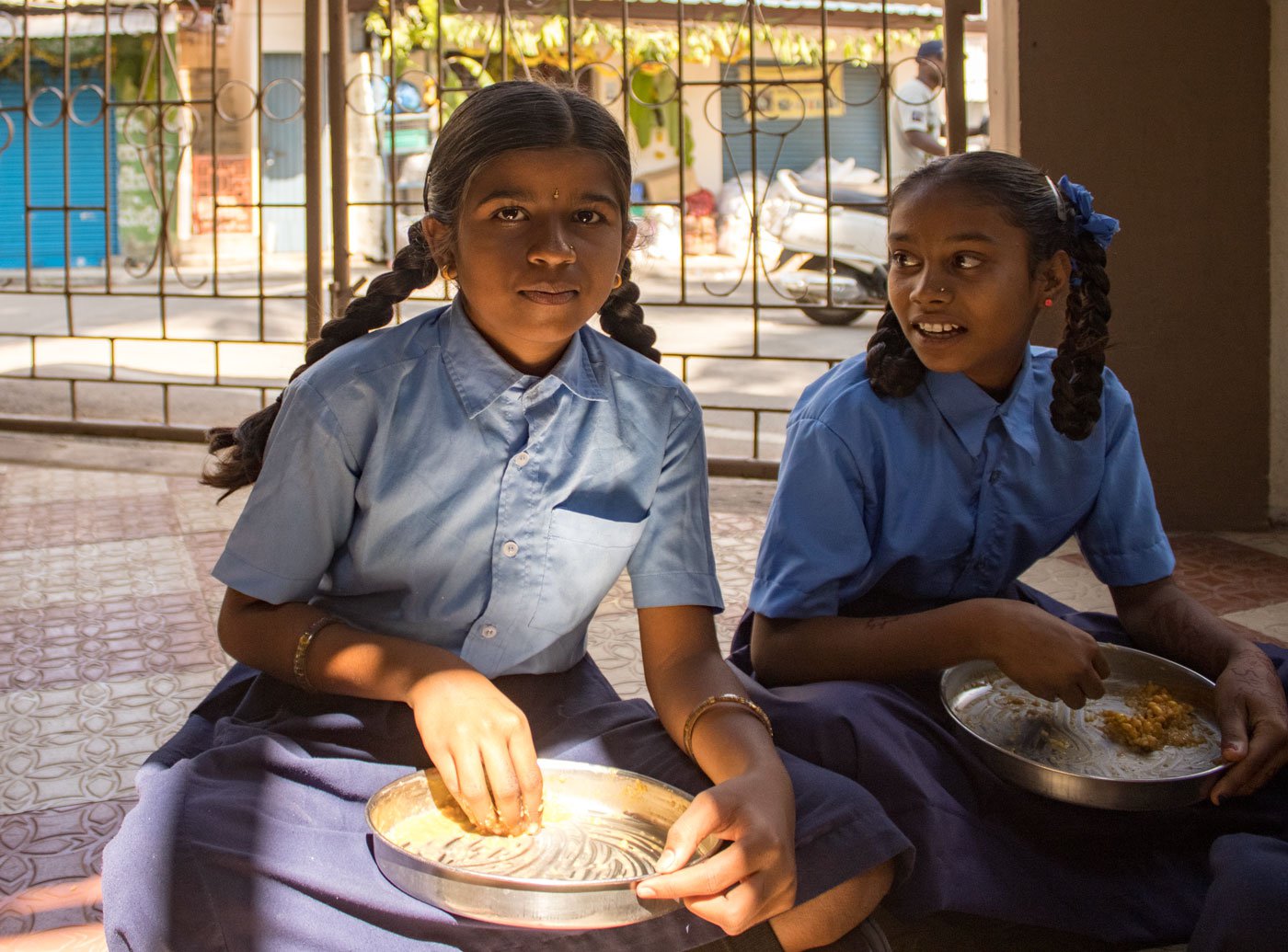
Aishwarya Chennappa and Alija.S. are neighbours and classmates at
Nammura Government Lower Primary School, in
Pattanagere locality of Bengaluru.They
always eat lunch together at school
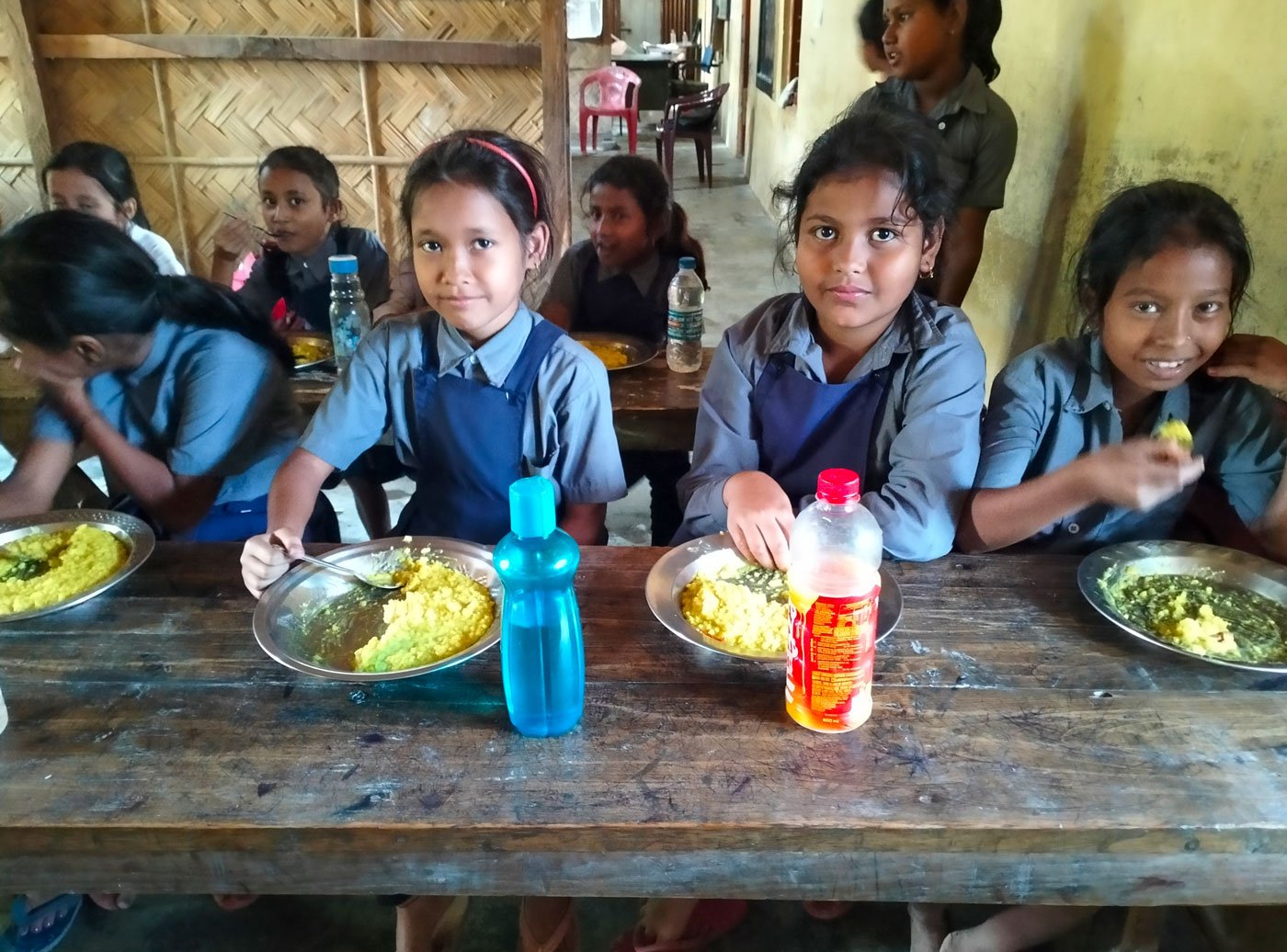
Left to right: Anisha, Rubi, Ayesha and Sahnaj from No.
858
Niz Khagata LP School in Nalbari district, Assam, eating their mid-day meal
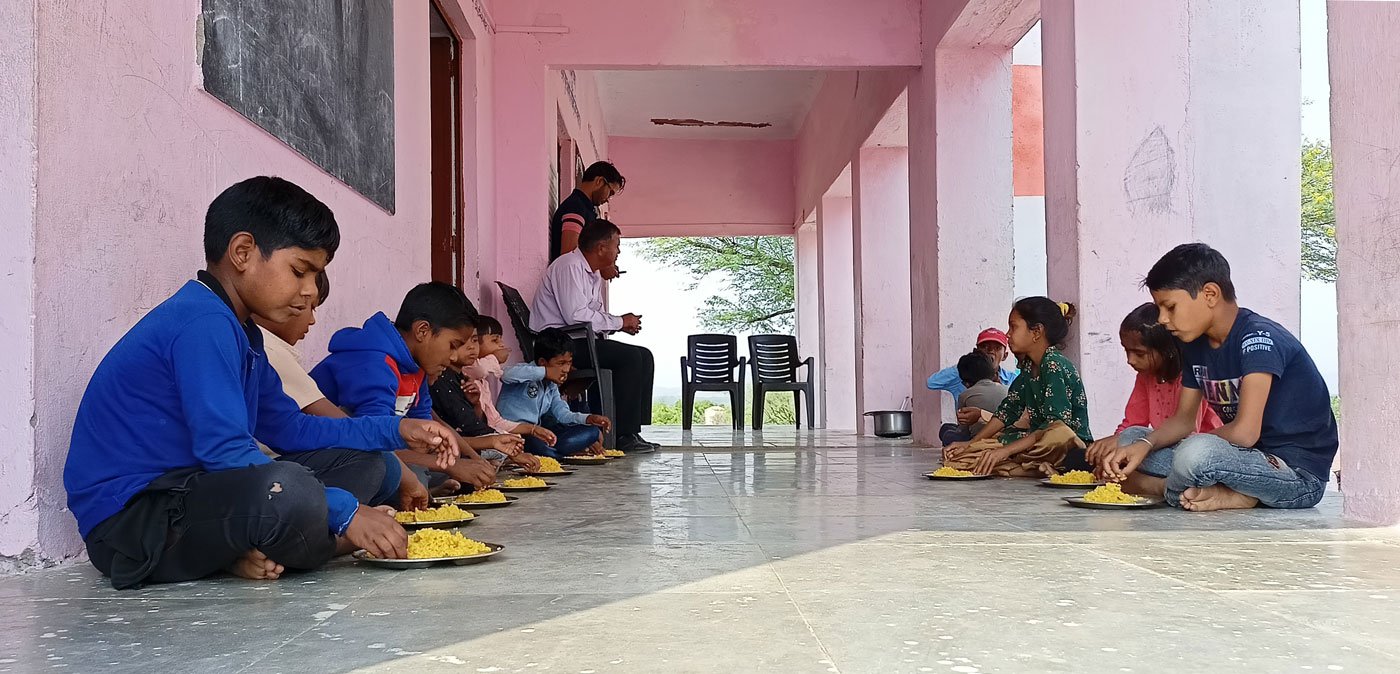
Students eating lunch together at Rajkiya Prathmik Vidyalaya, Jodhgadh village, in Kareda block of Bhilwara district, Rajasthan
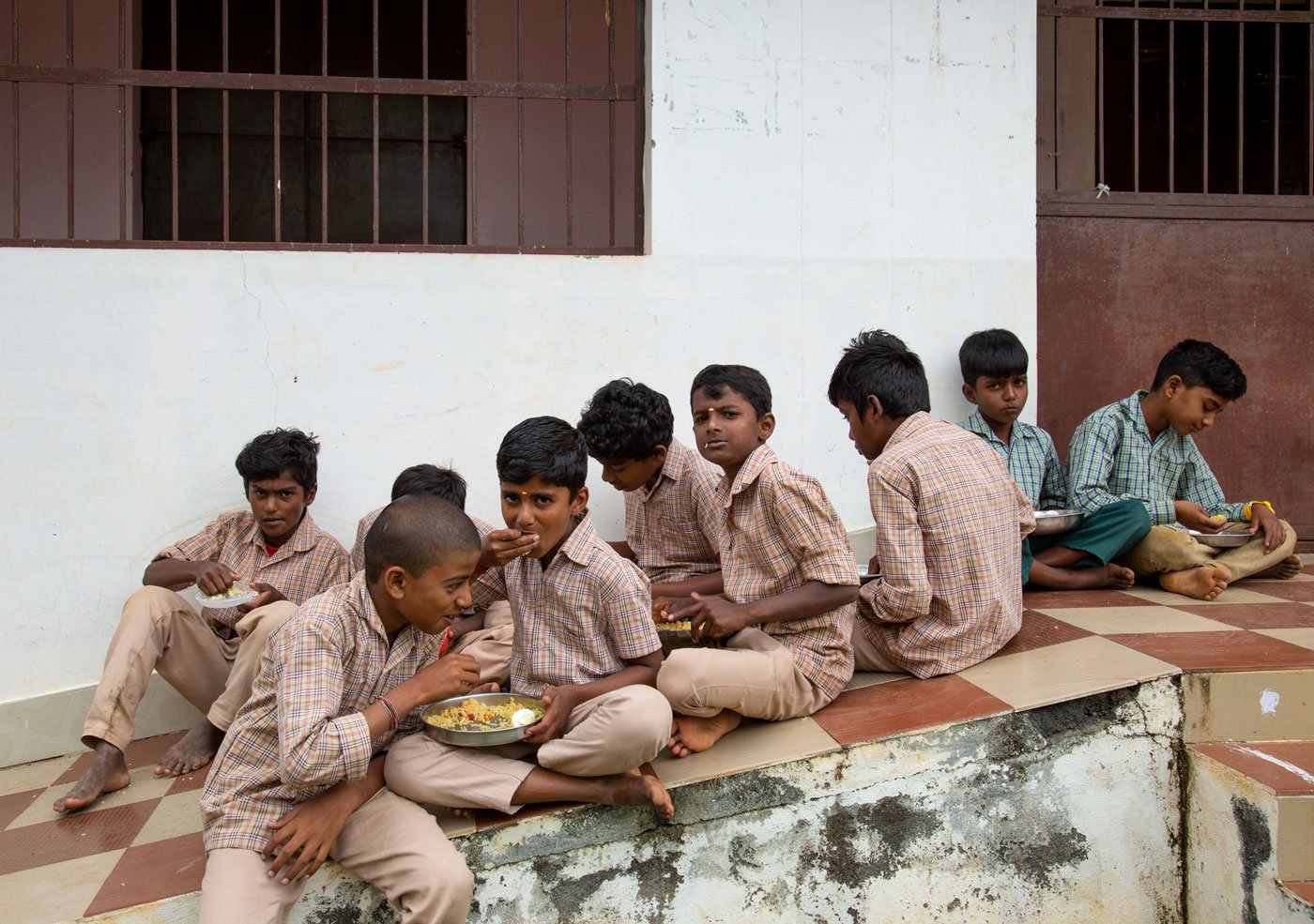
Most of the 160 students at the tribal residential school in Thalaimalai, Erode district, are from Soliga and Irula communities
This story has been reported by
Purusottam Thakur
from Chhattisgarh;
Senthalir S.
from Karnataka;
Amrutha Kosuru
from Telangana;
M. Palani Kumar
from Tamil Nadu;
Amir Malik
from Haryana;
Pinku Kumar Das
from Assam;
Ritayan Mukherjee
from West Bengal;
Jyoti Shinoli
from Maharashtra;
Haji Mohammed
from Rajasthan; and edited by
Priti David
and
Vinutha Mallya
,
with editorial support from
Sanviti Iyer
. Photo editing by
Binaifer Bharucha
.
Cover photo: M. Palani Kumar
